Ever wondered what it’s like to do a liveaboard scuba diving in the Great Barrier Reef? Continue reading on how I finally ticked this off my bucket list!
More than 10 years ago I put together my bucket list and on that list, I had placed “scuba diving in the Great Barrier Reef”. I had also put “climb Mount Everest” because it seemed like a cool thing to do.
In time, I discovered I was not made to climb mountains. And so I Marie Kondo’d my bucket list and took out all climbing activities. She would be so proud of how quickly I let go of which no longer brings me joy!
As my passion for the ocean grew, my bucket list also started to get filled with more scuba diving goals. The oldest and one of my first bucket list entries was left still unchecked. When I started hearing news about the Great Barrier Reef “dying”, I knew I was running out of time. I had to see it before it was too late.

Luckily, my friend Sushee, who was based in Australia, knew how to scuba dive. And so we decided to do a liveaboard on the Great Barrier Reef in September.
Getting to the Great Barrier Reef
Applying for an Australian Tourist Visa for Filipinos
As a Philippine Passport holder, I couldn’t just book a ticket and go scuba diving to the Great Barrier Reef. I must first conquer the first barrier- getting an Australian Tourist Visa.

This made me feel anxious as I’ve been rejected by the US embassy twice but I hoped that the Australian immigration was more welcoming. The great thing about applying for the Australian tourist visa was that it can be done online and there was no interview.
I created an account on the Australian Government Immigration website. Then uploaded any required documents and paid for the application. I submitted all the documents that I thought would convince them I was not going to illegally immigrate! This included:
- My existing and past passports with all the stamps and visas to show my history of travels. To be sure, I even submitted my passports from when I was a child.
- I submitted documents and business permits to show I was employed and running my own business.
- I submitted my current bank certificates to show proof I could afford my trip.
- My itinerary which included my plans to visit Sydney and Cairns (which was the entry point to the Great Barrier Reef).
- Though not required, I asked my friend Sushee and my godfather who was Australian citizen to give a letter stating they will host me during some of my stay in Sydney.

I applied for a tourist visa in June. After about two weeks of waiting, I received an email from the Australian embassy granting me a tourist visa. I was given a multiple entry visa valid for a year. And with each entry, I was allowed to stay for 3 months from the date of each arrival.
I was so happy that I have conquered this first barrier!
Traveling to The Great Barrier Reef from the Philippines
Since I wanted to go scuba diving in the Great Barrier Reef, I had to go to Queensland, Australia. The reef is located in the Coral Sea which is off the coast of Queensland.
From Manila, I flew to Sydney, Australia via Qantas Air. It was a 10-hour flight. I arrived in Sydney right at the end of winter and the start of spring. Suffice to say, this tropical girl froze her ass off when temperatures were dropping to 18°C.

I spent a few days touring Sydney before flying to Cairns, Queensland with my friend, Sushee.
If you’re looking for some recommendations on what to do in Sydney, here is a 3-day Sydney itinerary you can follow! I particularly enjoyed doing the coastal walk and visiting Taronga Zoo. And of course, your trip would not be complete unless you visit the iconic Sydney Harbour Bridge and The Opera House.
From Sydney, Sushee and I flew to Cairns via Tiger Air. The flight took 3 hours. Unlike Sydney, Cairns’s weather was warmer which reminded me much of home.
Scuba Diving in the Great Barrier Reef
About the Great Barrier Reef
The Great Barrier Reef makes up about 10 percent of the world’s coral reef ecosystems and is one of the best-known and most complex natural systems on Earth. It covers approximately 344,400 km2 and includes in area. It is composed of 3000 coral reefs, 600 continental islands, 300 coral cays, and about 150 inshore mangrove islands.
The Great Barrier Reef Marine Park overlooks the commercial and economic activities that happen in the area. The Great Barrier Reef attracts millions of visitors each year providing around 70,000 jobs and contributing more than $5.6 billion each year to the Australian economy
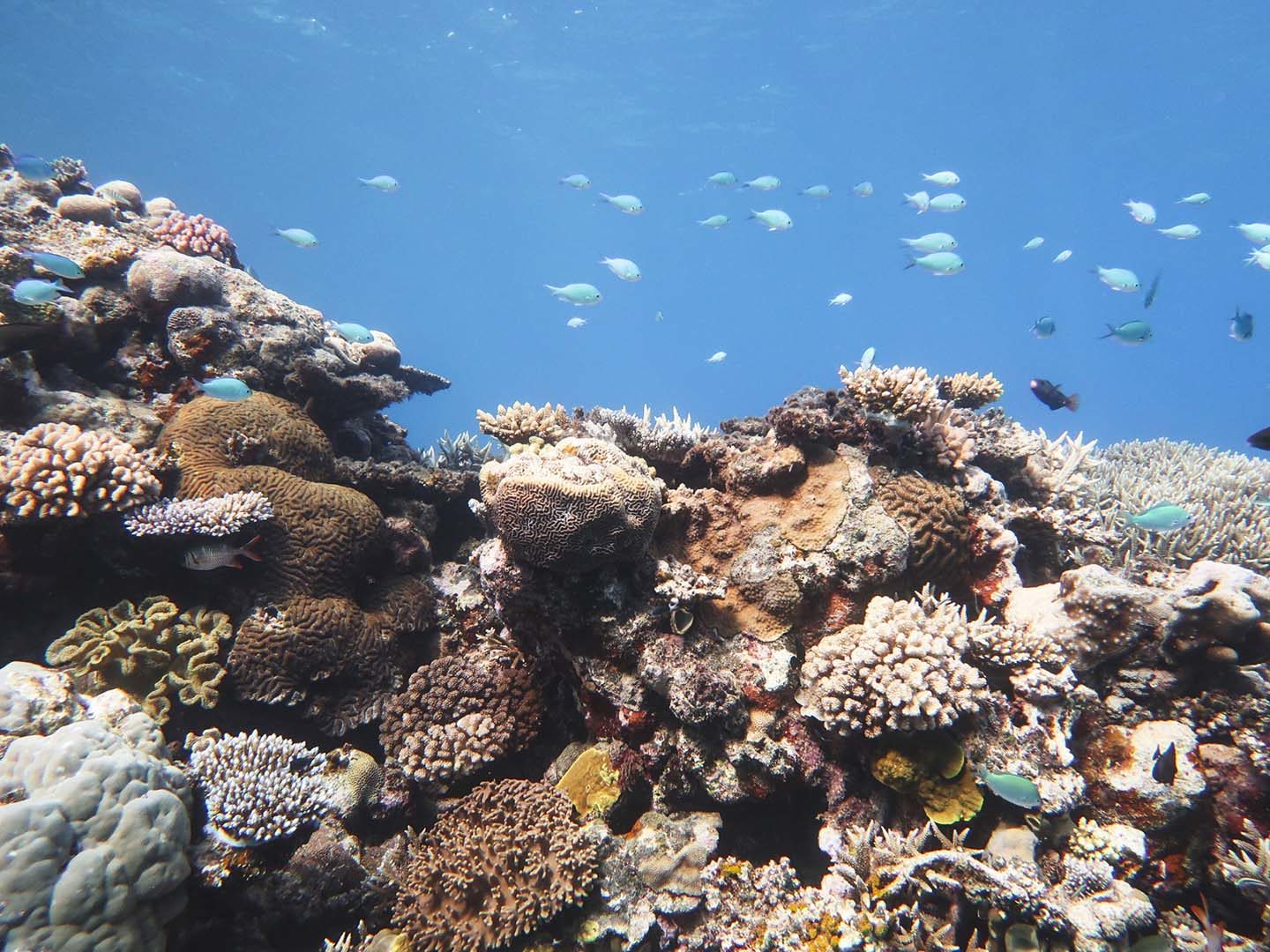
Dive Season in the Great Barrier Reef
You can dive all year round on the Great Barrier Reef but it is recommended to go from late August to December. In Australia, this is Spring to Summer season.
Water Temperature in the Great Barrier Reef
Water temperature in the Great Barrier Reef can range from from 23-29 degrees Celsius.
Since we went diving in September when Spring was just starting, the temperature was still a bit cold for me. My dive computer was logging temperatures of 24-25 degrees Celcius.
Thankfully, Prodive Cairns rents out 5mm wetsuits to keep this tropical island girl warm!
Liveaboard Experience with Pro Dive Cairns
Based on research, most people recommend that it is much better to do a Liveaboard Scuba Diving Trip. The Great Barrier Reef is wide and so doing a one-day dive trip would not be enough. And of course, the best dive spots are normally in the outer reef away from human activities!

If you haven’t heard of what liveaboard scuba diving is, it is when you live aboard a vessel and scuba dive in a specific route or area. You get to dive several times a day and stay on the ocean for days at a time without having to go back to land.
We did not go all the way to Cairns, Australia just to do one dive in the Great Barrier Reef and so we chose to do a 3-day, 2-nights liveaboard with Pro Dive Cairns.
To learn more about liveaboard diving, read my post on Liveaboard Diving for Beginners: A First Timer’s Complete Guide.
Pre-liveaboard
Before going on the liveaboard trip itself, we were asked to visit their dive shop a day before. This was to make sure that all our paperwork and pre-dive requirements get sorted out. We basically had to show our dive certification cards, signed some dive waivers, and sorted any dive gears we were renting.
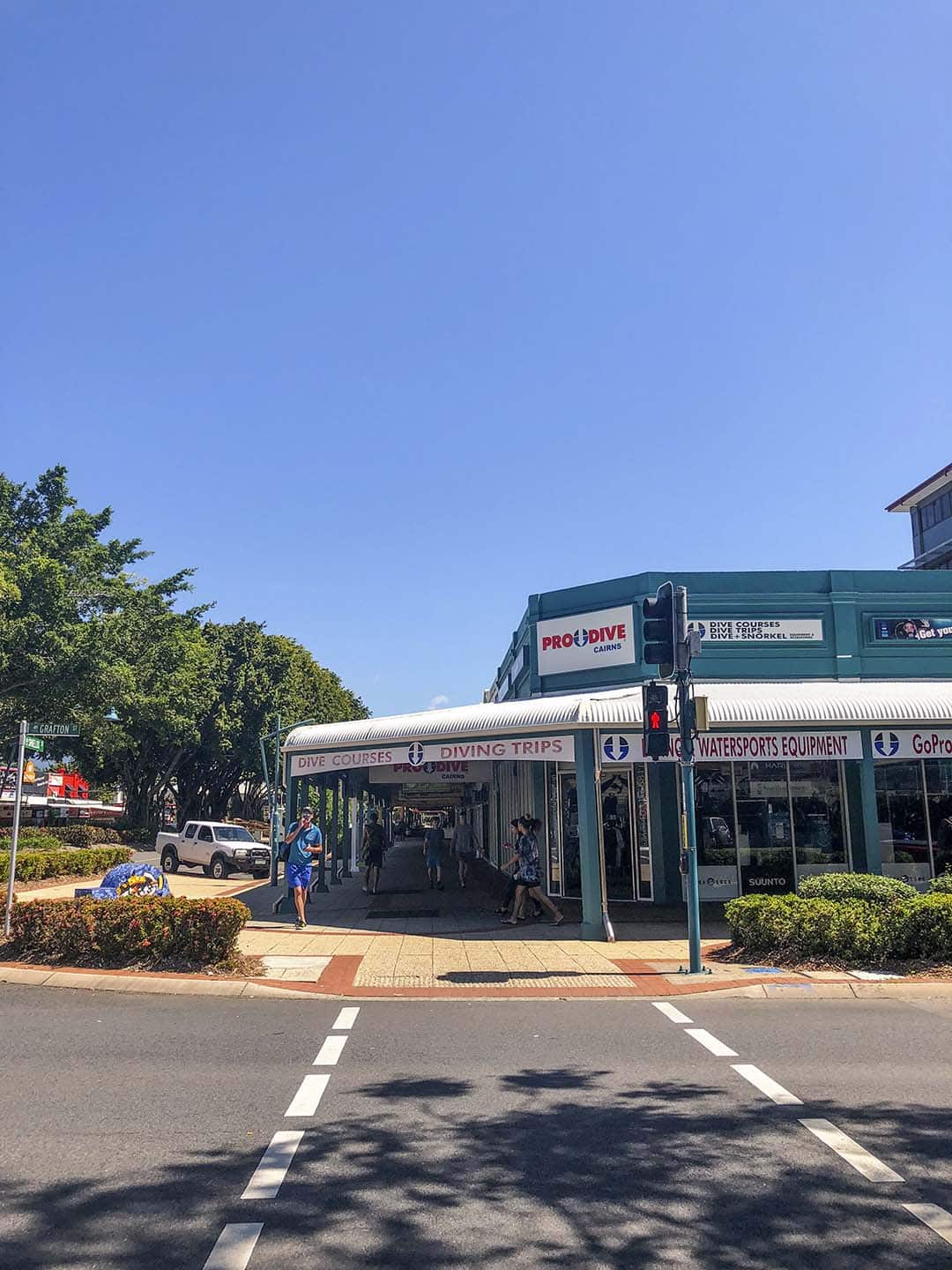
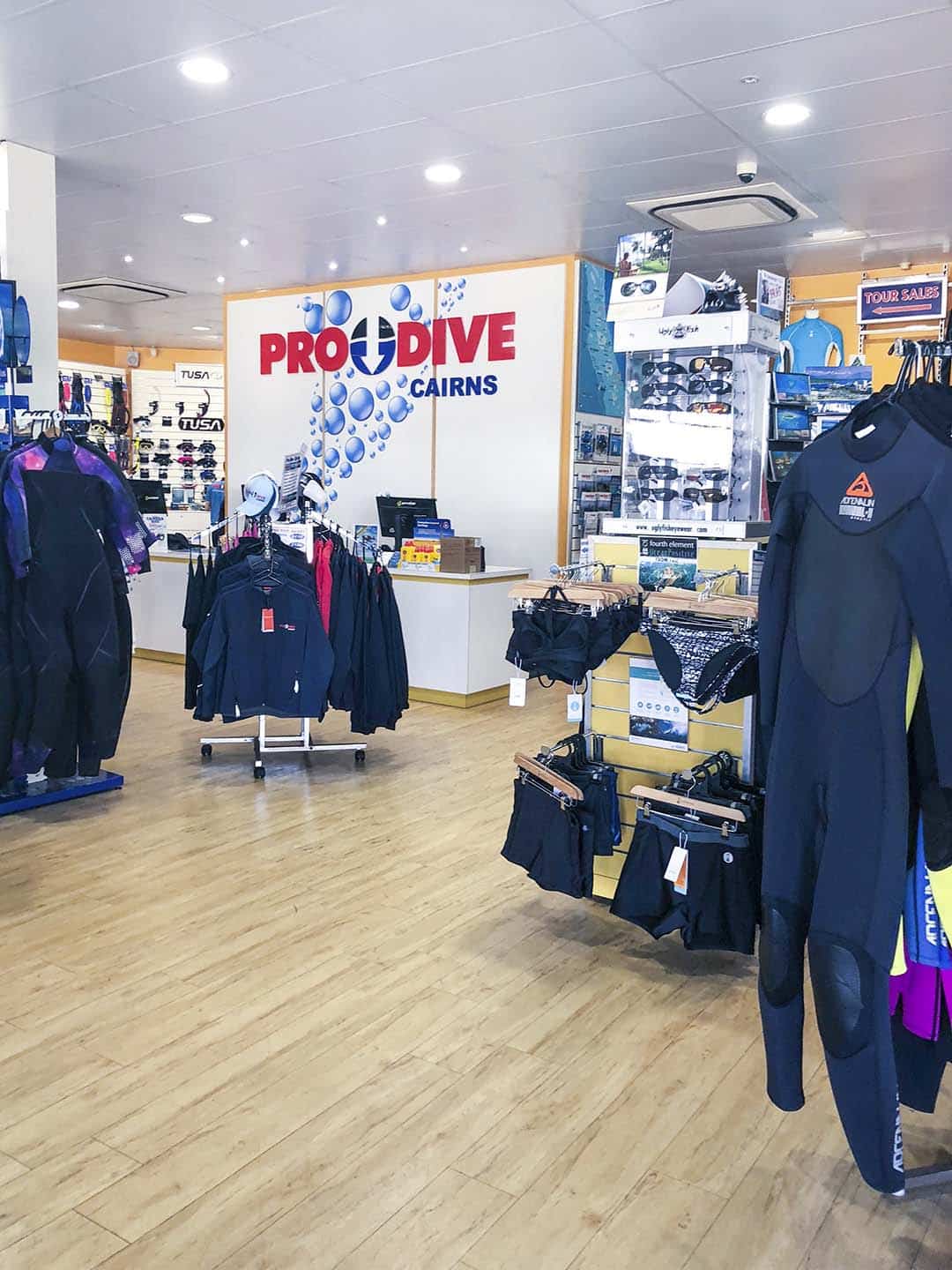
Boarding time
The next day at 5:30 AM, we were picked up from our hostel. We made a quick stop at the dive shop to drop off any extra luggage we didn’t want to take in the liveaboard vessel. There was limited space on board, so they advised us to leave anything we wouldn’t need.
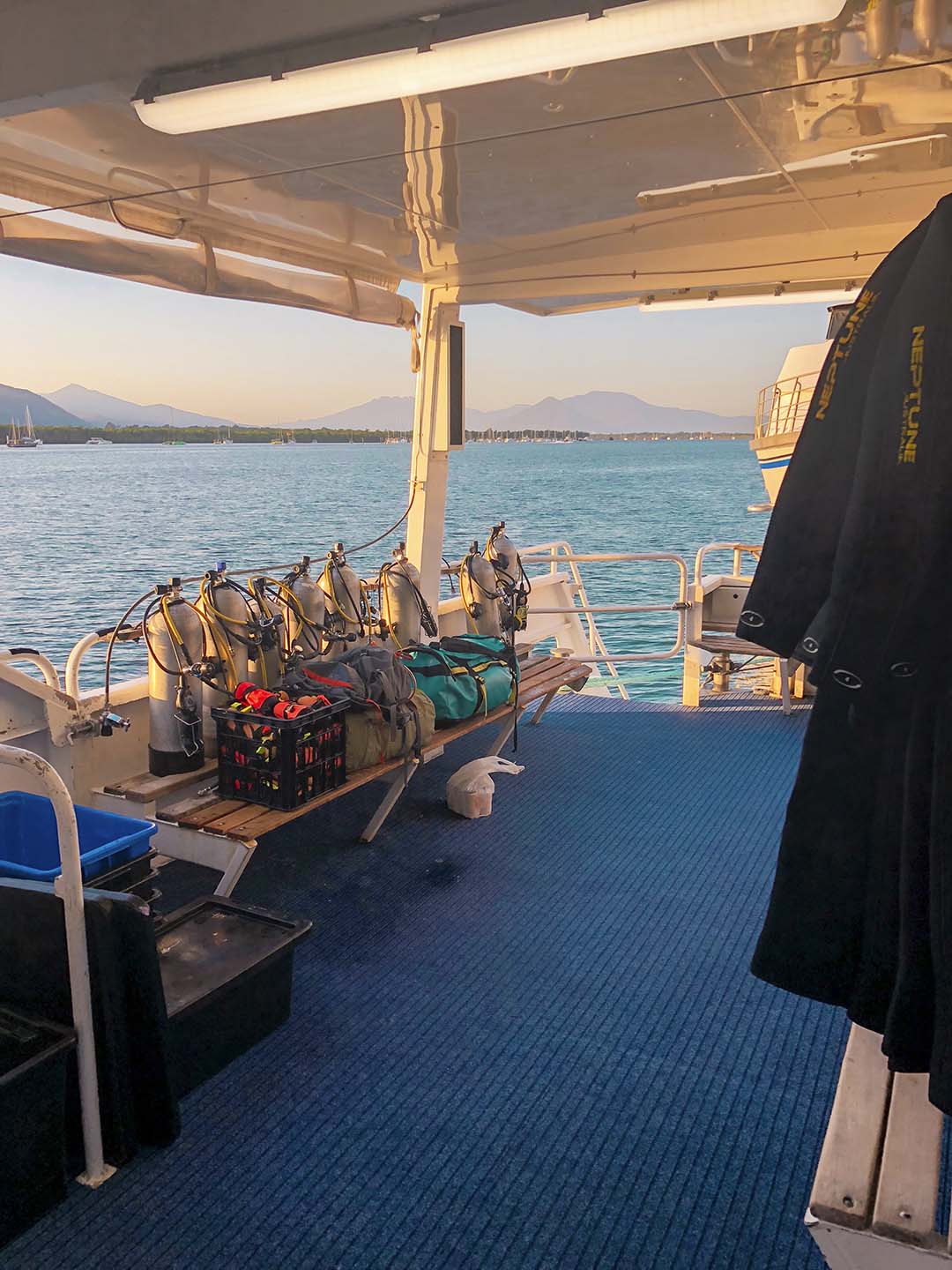
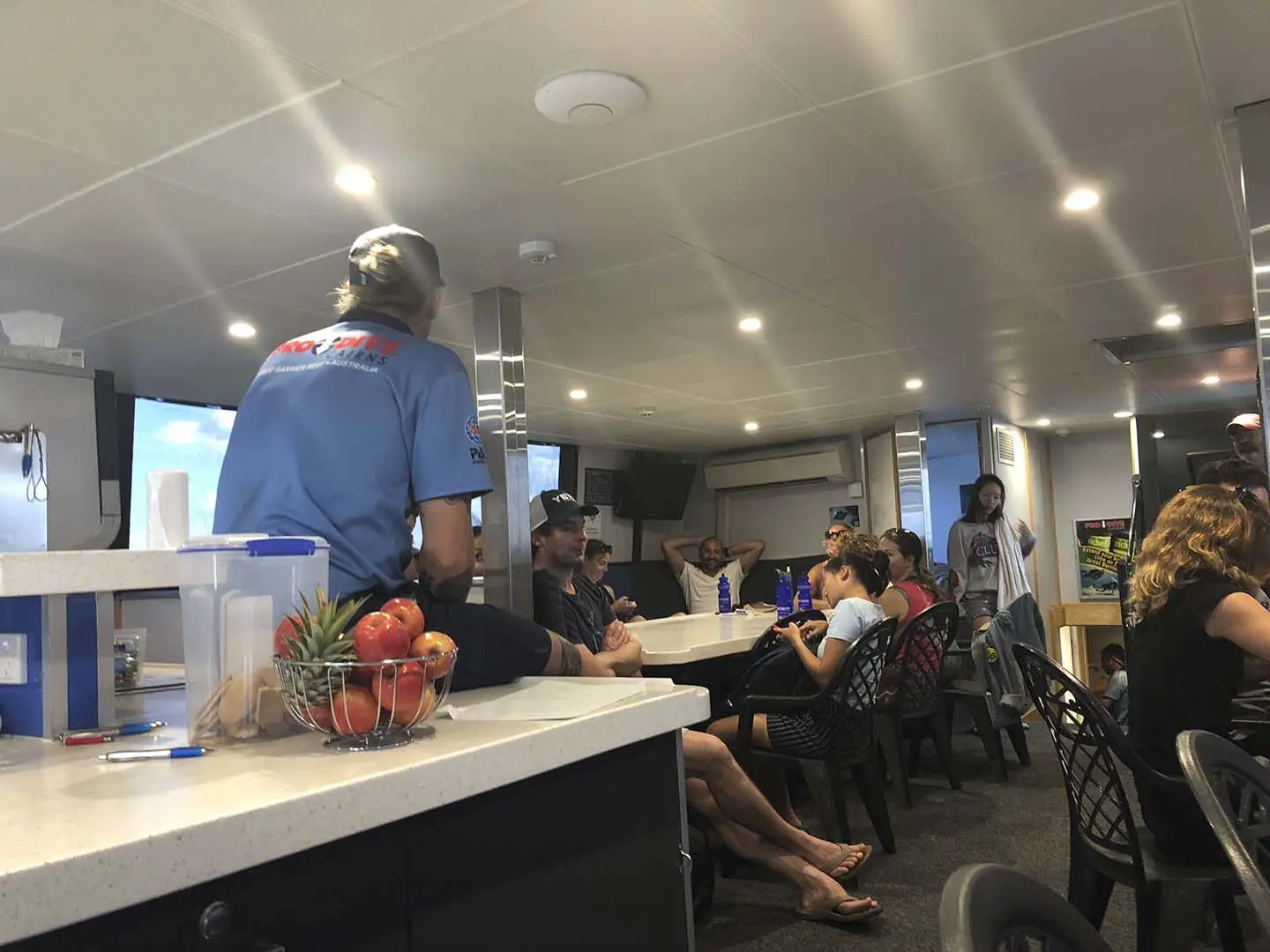
We headed to the marina and boarded the vessel. While waiting for our things to be loaded and the rest of the passengers to arrive we had some breakfast. We were advised to take some motion sickness pills before leaving port.
We were then briefed about our boat, some rules, and safety reminders. The crew on board was also introduced so we knew who did what.
Passengers Aboard
The liveaboard can accommodate up to 32 passengers. There was a mix of divers. Some were there to get their PADI open water certifications and some, like Sushee and I, just wanted to dive the Great Barrier Reef.
I was surprised to find out that there were also snorkelers in the group! So, yes, you can enjoy the Great Barrier Reef even if you are not a scuba diver.

The passengers we met were of different dive experiences, ages and countries. But the one thing we had in common was our love for the ocean!
Self-guided Scuba Diving
The liveaboard enabled us to do 11 dives on the Great Barrier Reef. The dives were unguided which meant we didn’t have a Divemaster (DM) or dive guide to show us around the reef. I had always dived with a DM so this was very new and nerve-wracking for me.

Sushee was an Open Water Certified diver with less than 10 dives under her belt. I was Advanced Open Water certified with a hundred dives. Naturally, she was very dependent on me. This was a new experience for me to look after someone other than myself during a dive. Usually, a DM is around to check on my buddy and me during my dives in the Philippines.

Thirty minutes before every dive, we all attended a dive briefing to help us navigate the site. Listening to the dive briefings was very important since we cannot take maps underwater!

My underwater navigation skill was put to the test while on the liveaboard. I thought we did fine until our last dive where we got lost and surfaced in the wrong place. They had to bring out the pump boat to drag us back in!
Life onboard a liveaboard
It was pretty much: eat – rest- dive – repeat on a liveaboard.
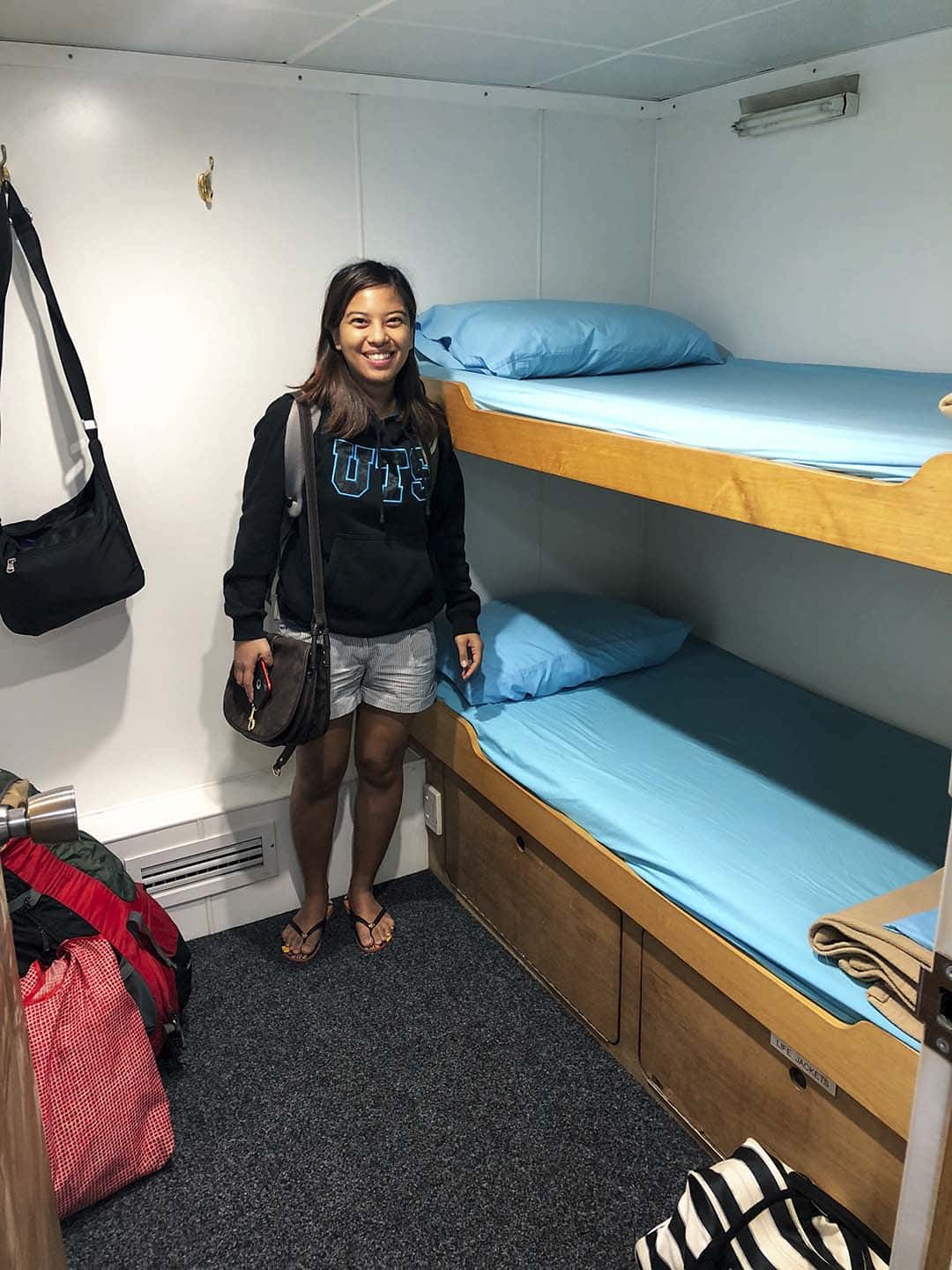
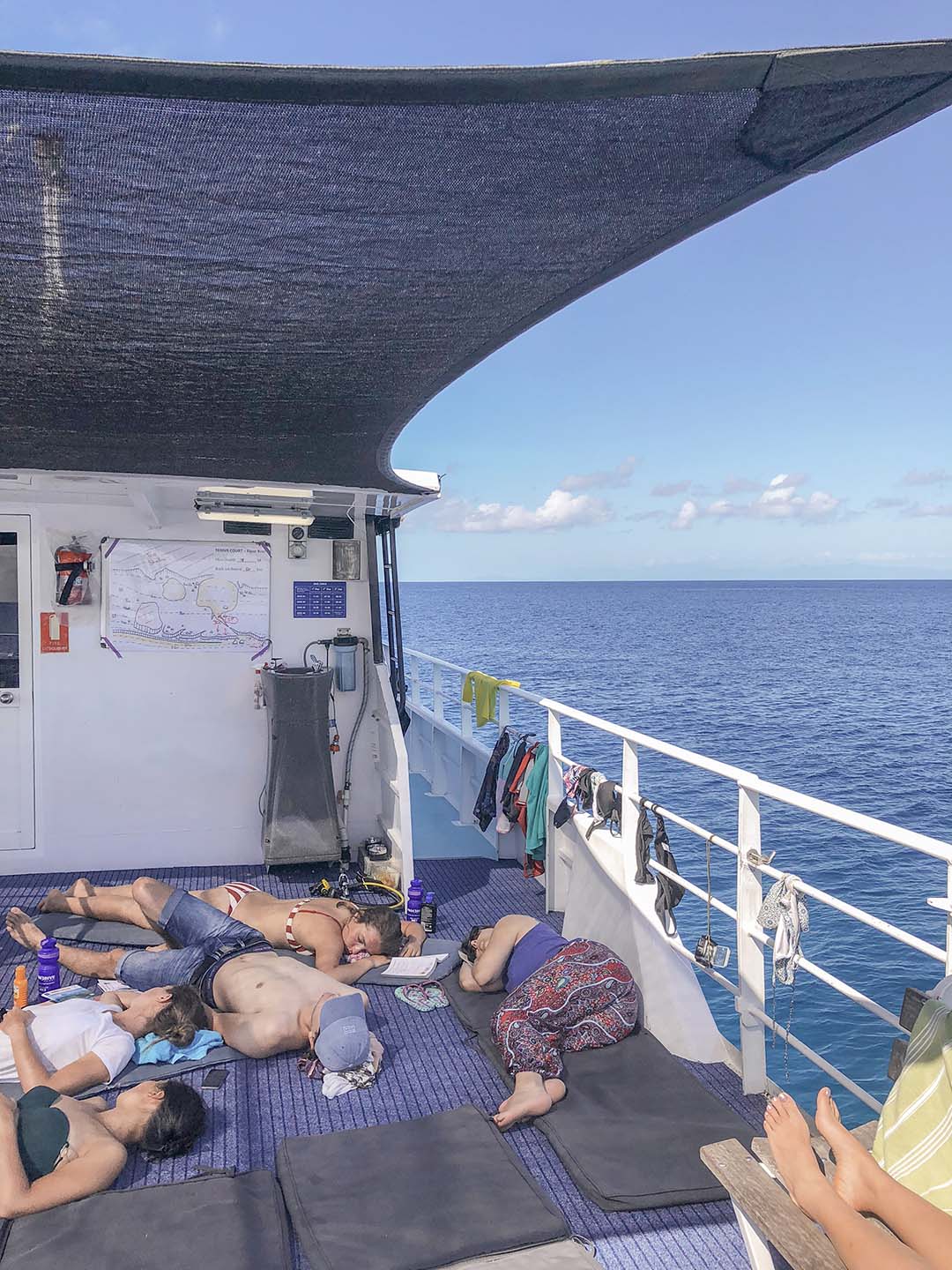
Sushee and I shared a tiny double-decker bedroom. The room was just for sleeping and storing our things. Most of the time we were either diving, eating or hanging out on the deck with the rest of the divers exchanging stories.
Of course, this was a different story, for those doing their certification while on the liveaboard. There was studying involved!
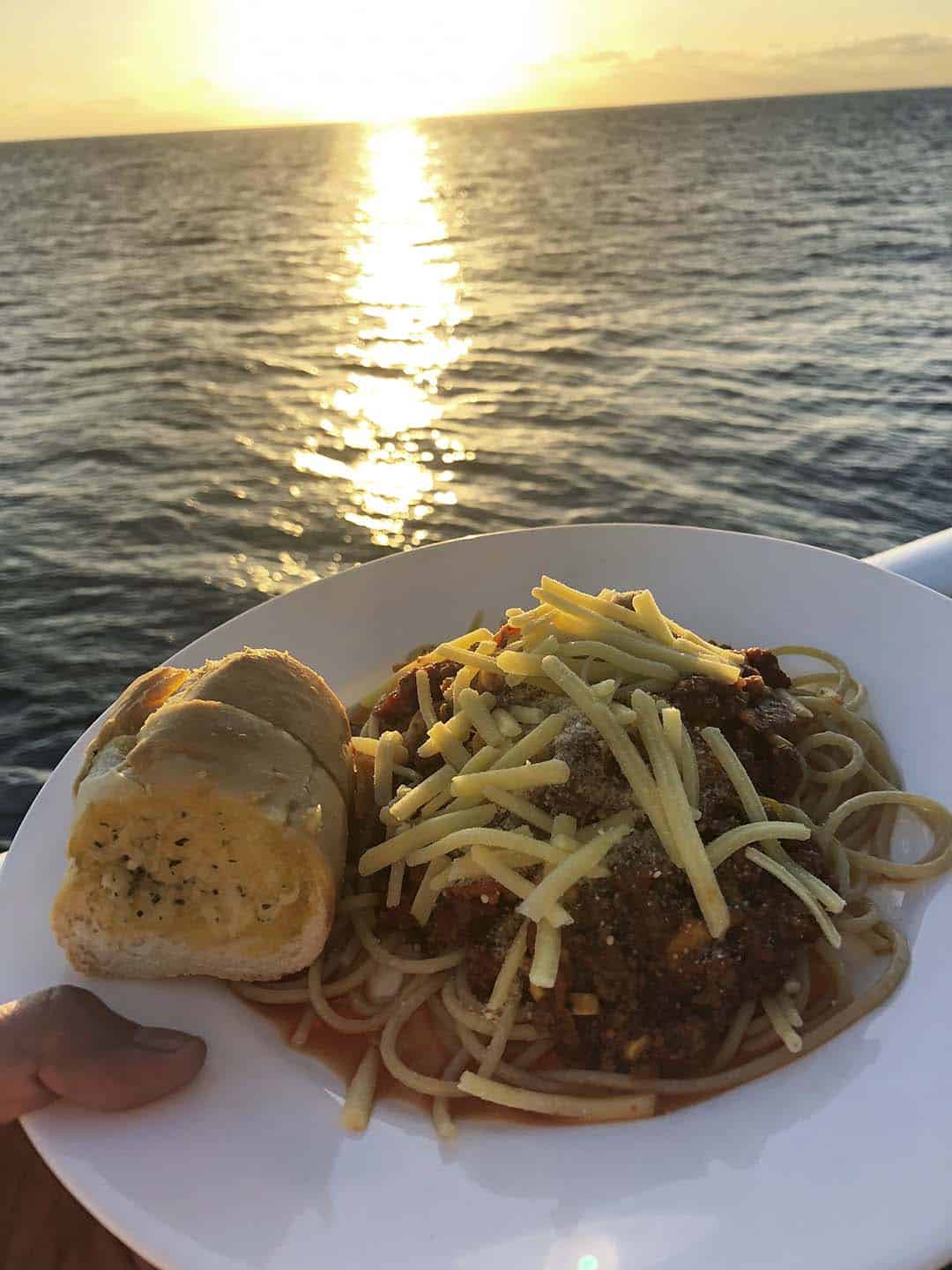
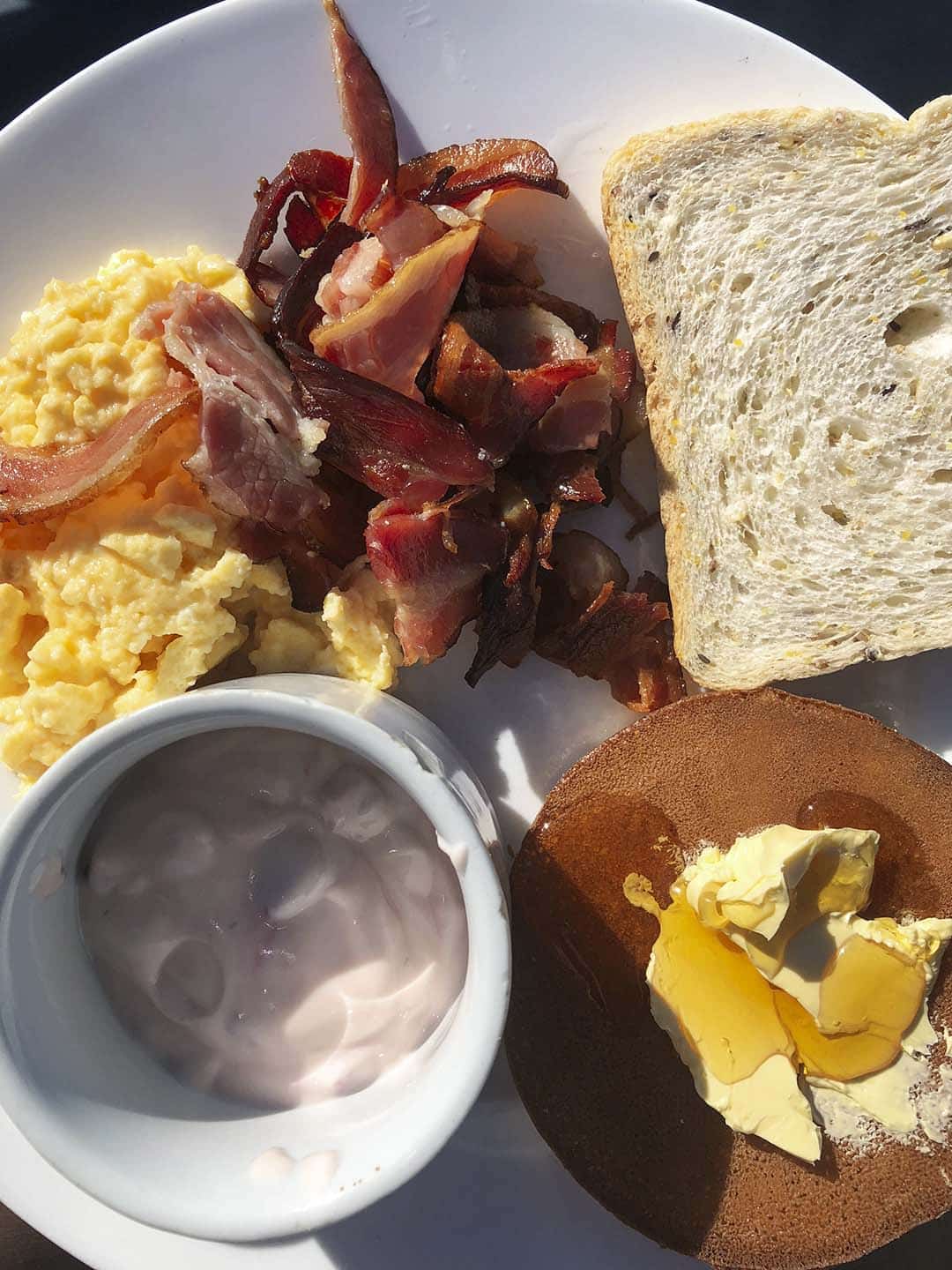

The food was served buffet-style. We were always fed well. There are no alcoholic drinks on board but you are welcome to bring your own bottle. No drinking and diving allowed though!

Dive Sites and Marine Life
The dive sites we visited during our liveaboard were Milln Reef, Thetford Reef, Flynn Reef, and Moore Reef. The dive sites are ideal for all levels of fun divers and have depths of 10-25 meters. Since I was diving with Sushee, we were diving within an 18-meter maximum depth limit for Open Water Certified divers.
The Great Barrier Reef is home to 1625 species of fish and more than 450 species of hard coral. One can also find dugongs and six of the seven species of marine turtle. Check out the photo gallery for some of the marine life I saw while doing a liveaboard in the Great Barrier Reef!
Click here to learn more about diving the Great Barrier Reef with Pro-Dive Cairns
Reef Check
When people find out I’ve gone to the Great Barrier Reef, they often ask “is it really dead/ dying?” To be honest, I don’t think there is a straight or accurate answer for this. I have only seen a portion of it and have only done 11 dives.
And well I’m not a scientist after all!
I can only share what I saw. The dive sites were still filled with life. I don’t remember seeing bleached corals but I did see dead ones. But like any dive sites I have been to, seeing dead corals is “normal.”

I did not see any plastic or trash in any of the dives so at least that’s a good thing, right?
Accommodations in Cairns
Before and after our liveaboard, Sushee and I opted to stay in hostels. Everything is within walking distance so we did not have any problems getting around the town.
From the airport, we took a van to get to our hostel. We only had a free day before our liveaboard. Our first hostel was in Global Backpackers. There are a lot of options to stay in Cairns but we chose this place for its location to the dive shop. Click here to book a stay with Global Backpackers.
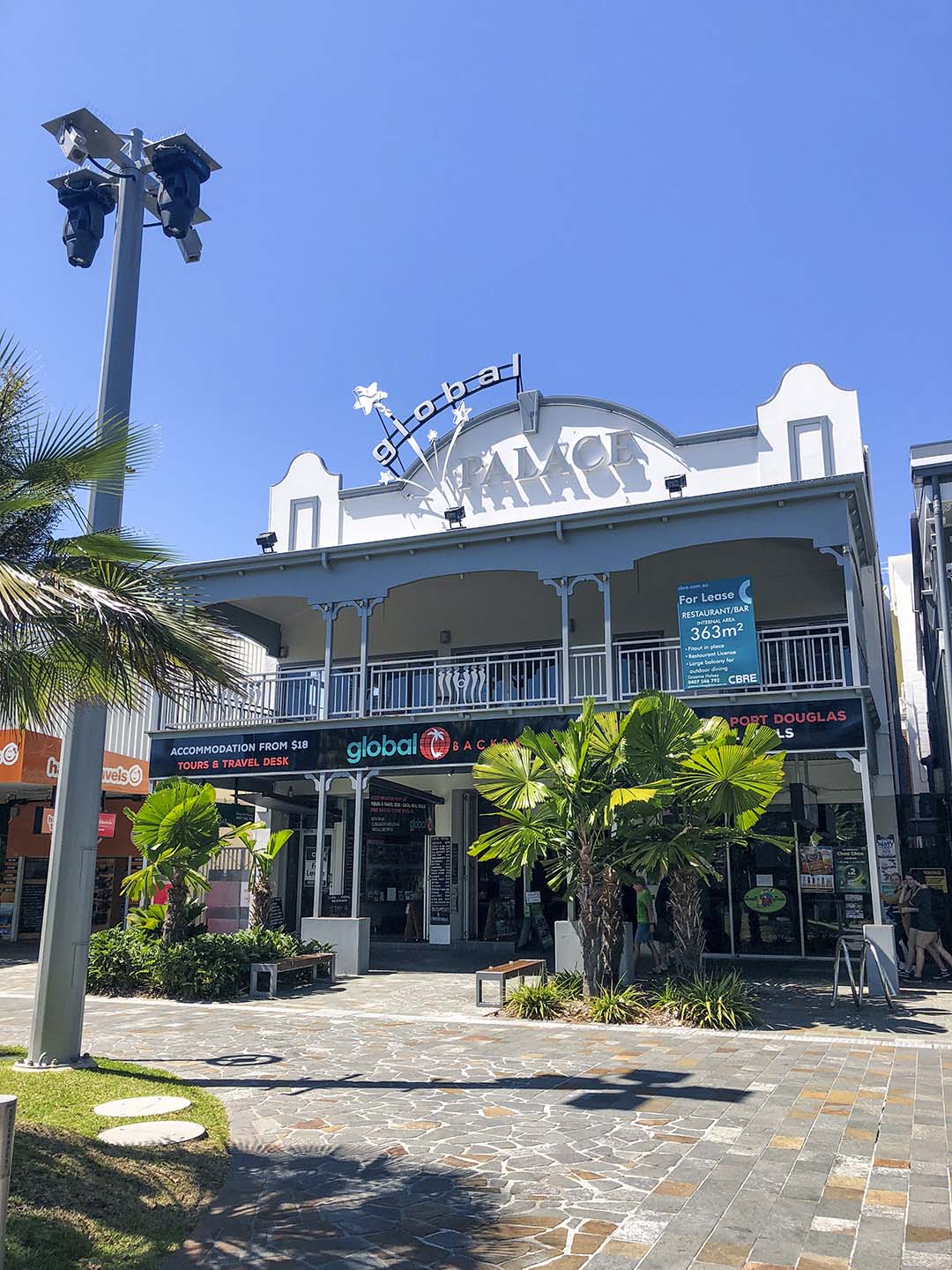
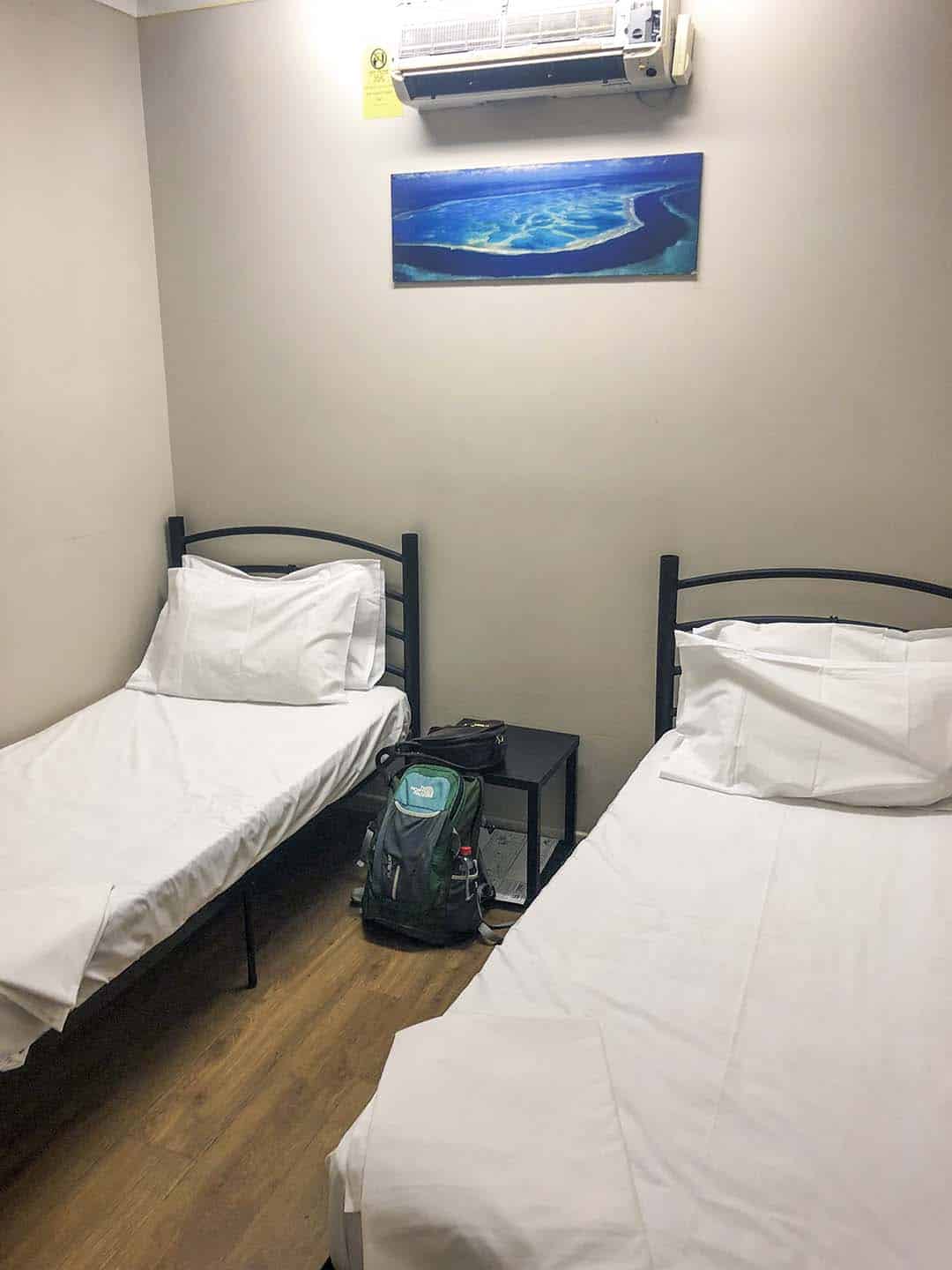
After our liveaboard, we stayed in Caravella. It was a bit closer to the boulevard but still within walking distance to everything else. Click here to book a stay with Caravella.
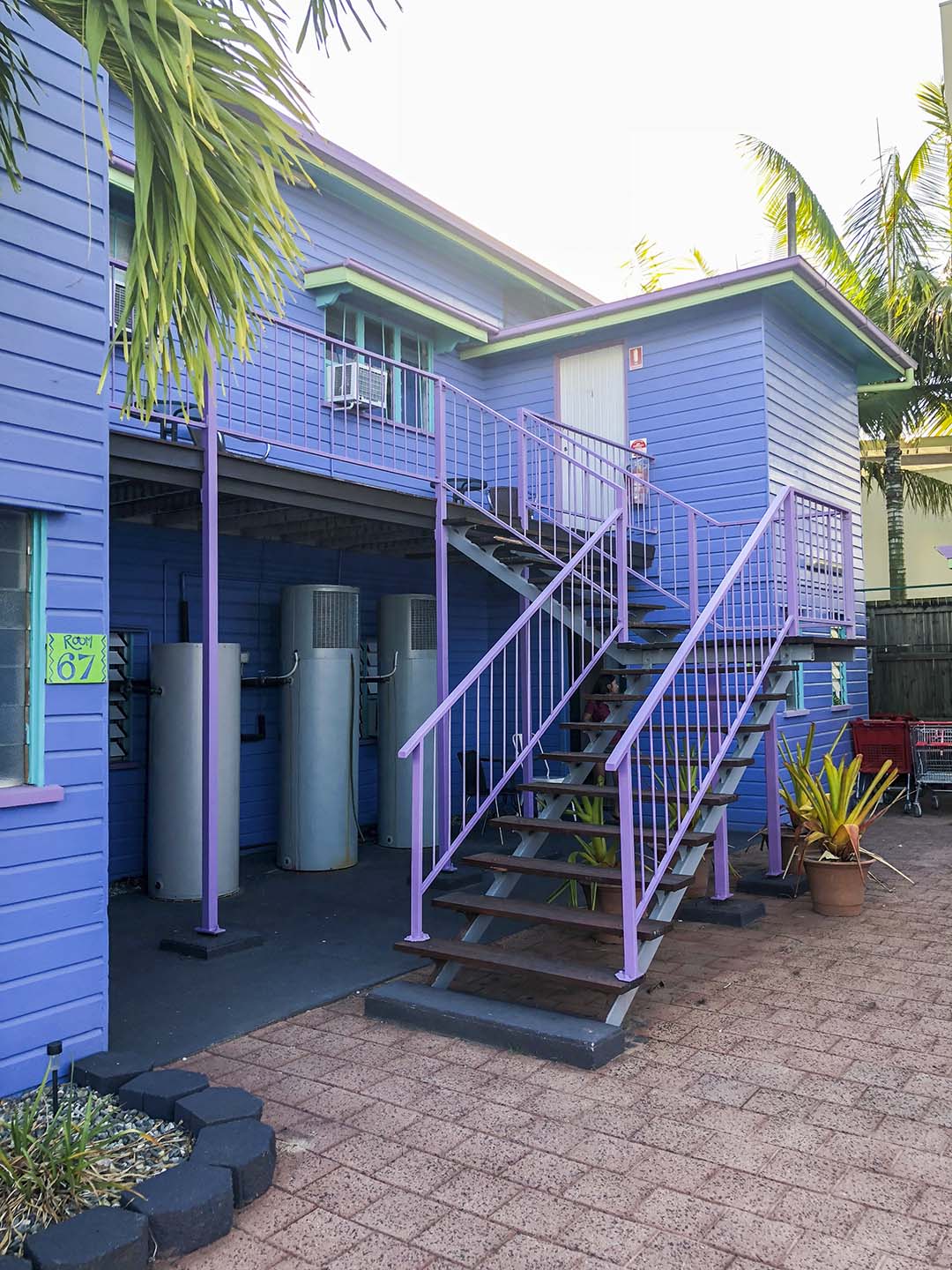
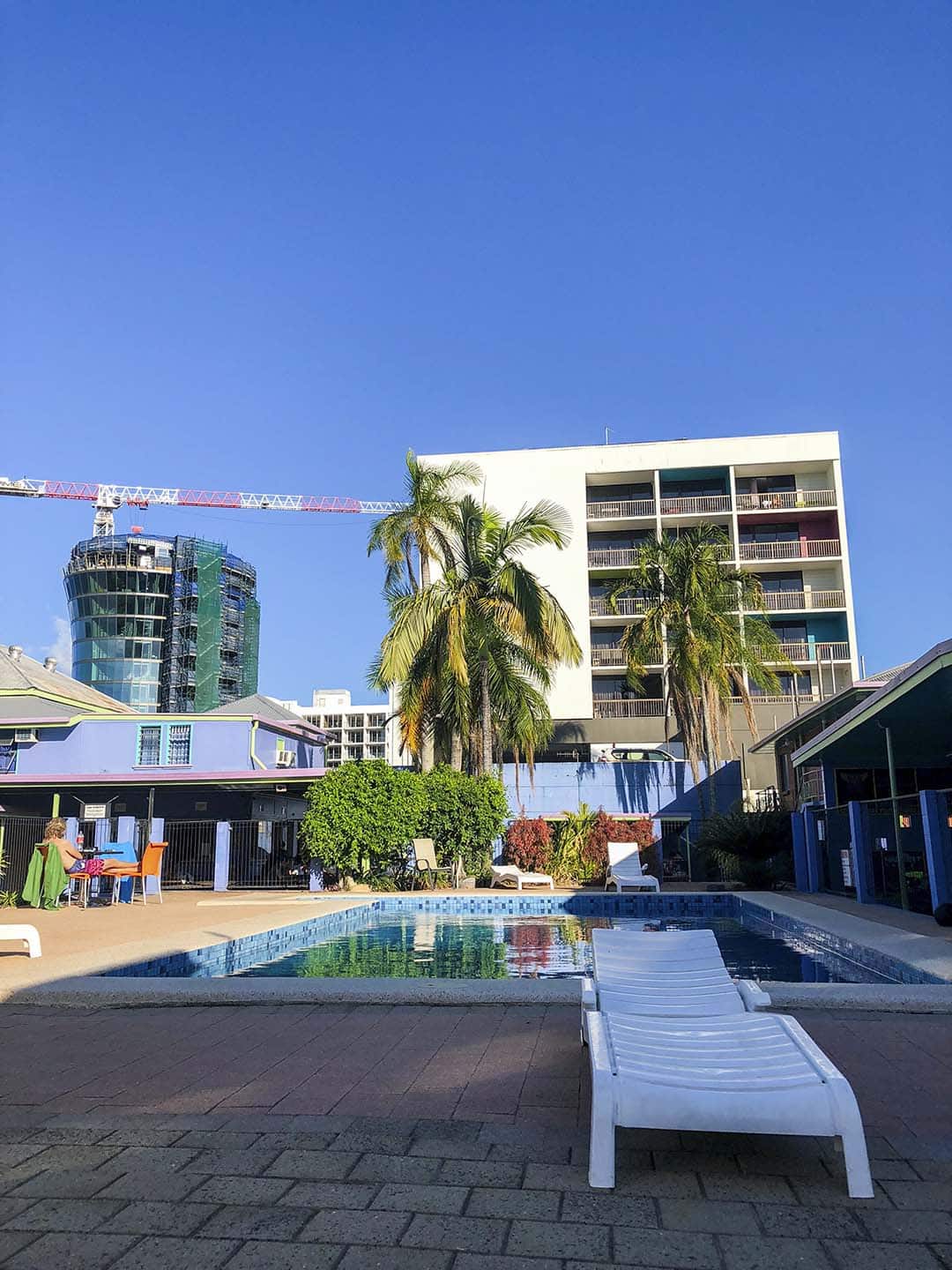
If you’re not too keen in staying in backpackers’ inn or hostels, there are a whole lot of options in Cairns. Check out the map below for options that may fit your budget and accommodation style!
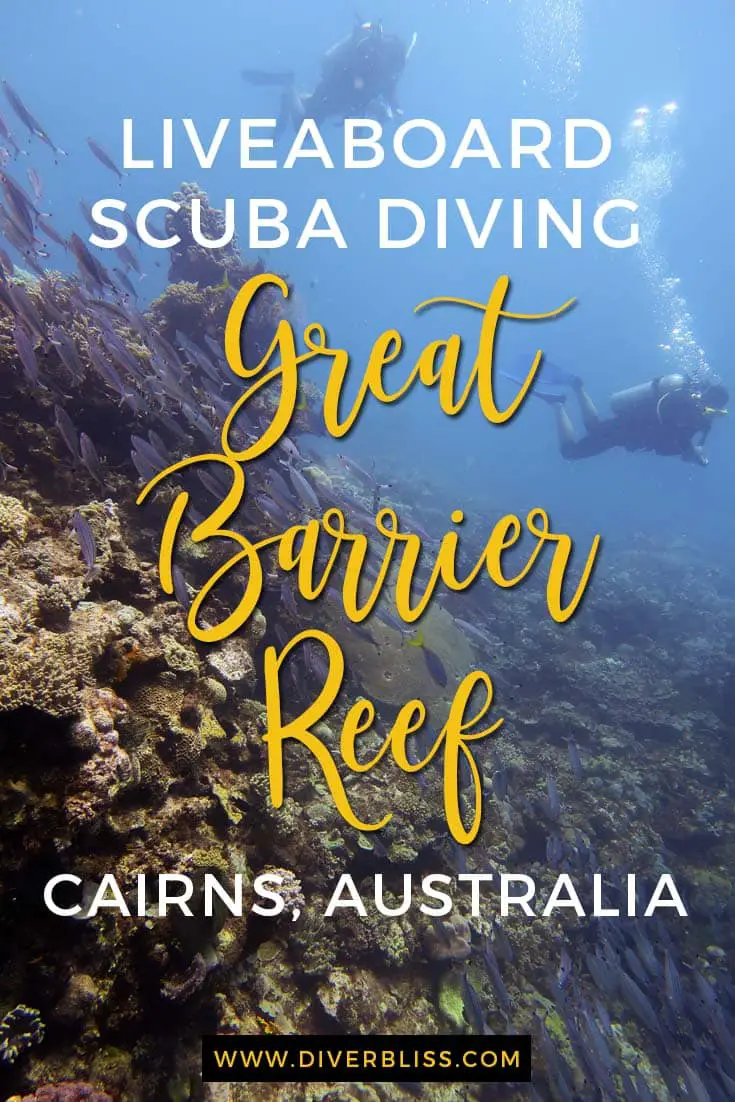
I’m so glad that I have finally ticked this off my bucket list! It is something that I’d highly recommend and wouldn’t mind doing a repeat of it!
Have you gone diving in the Great Barrier Reef? How was your experience? Is diving in the Great Barrier Reef on your bucket list? Leave a comment below!
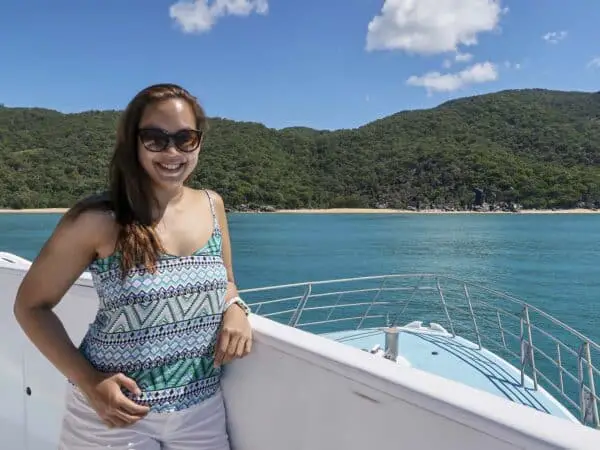






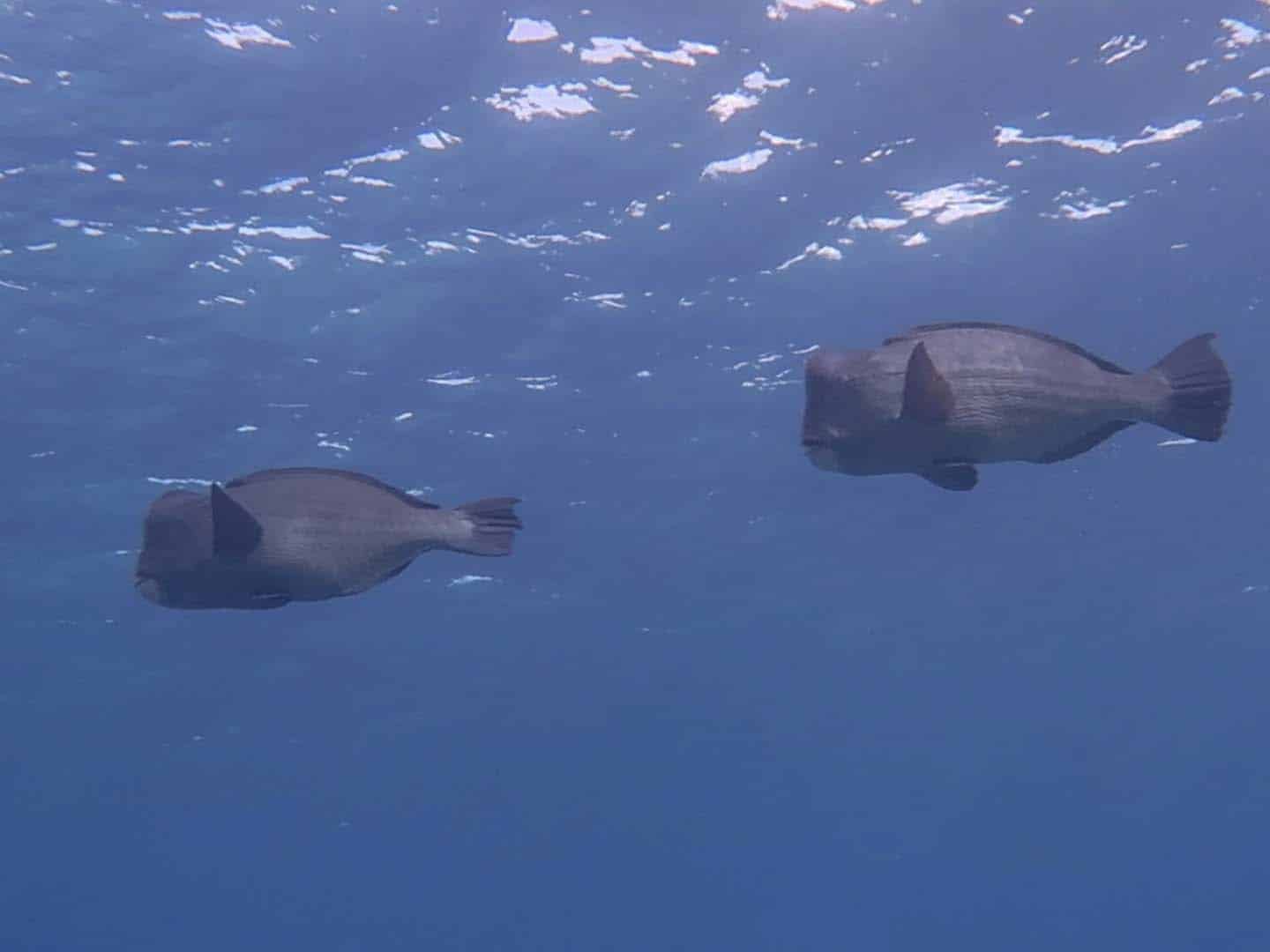
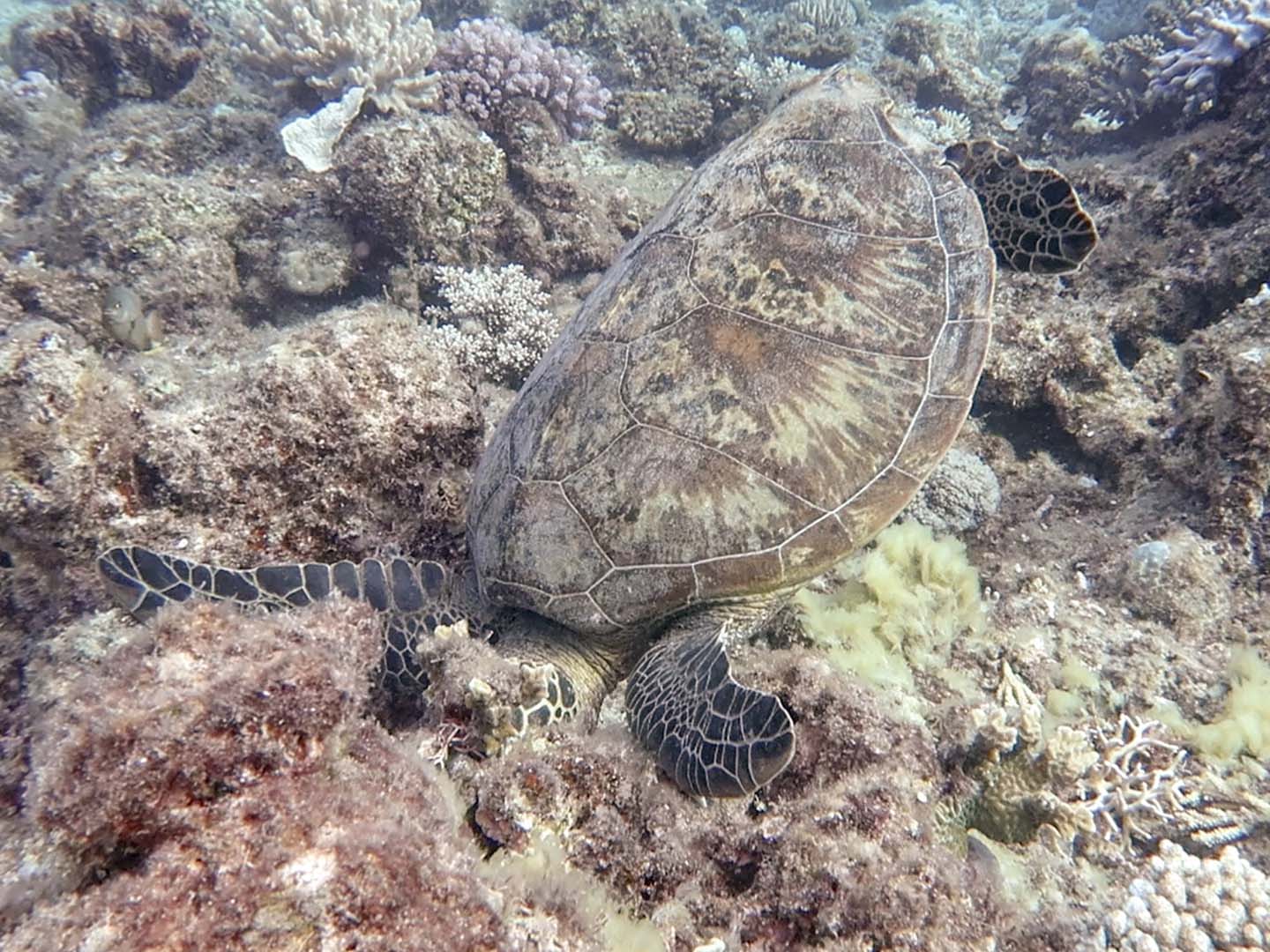
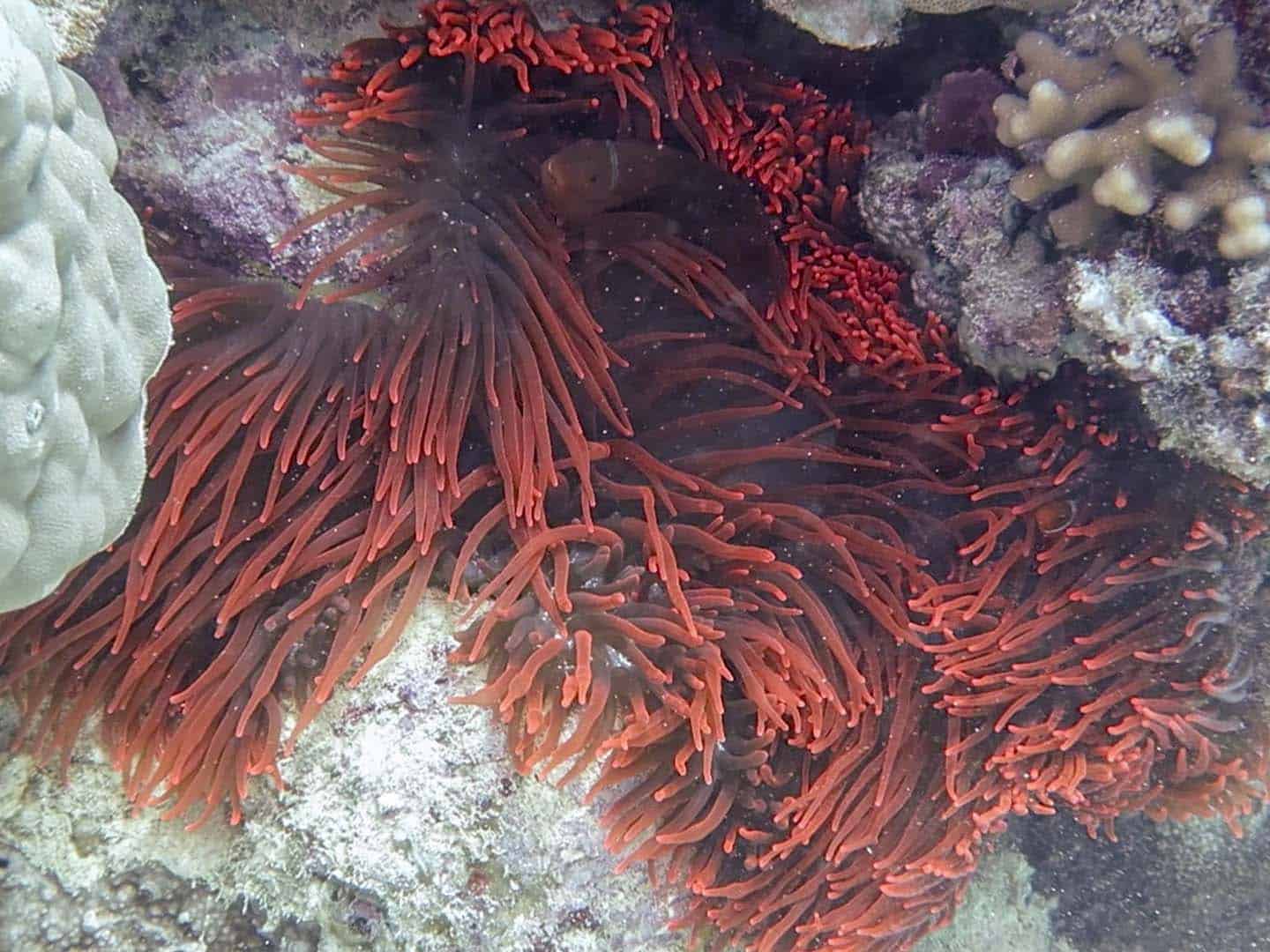
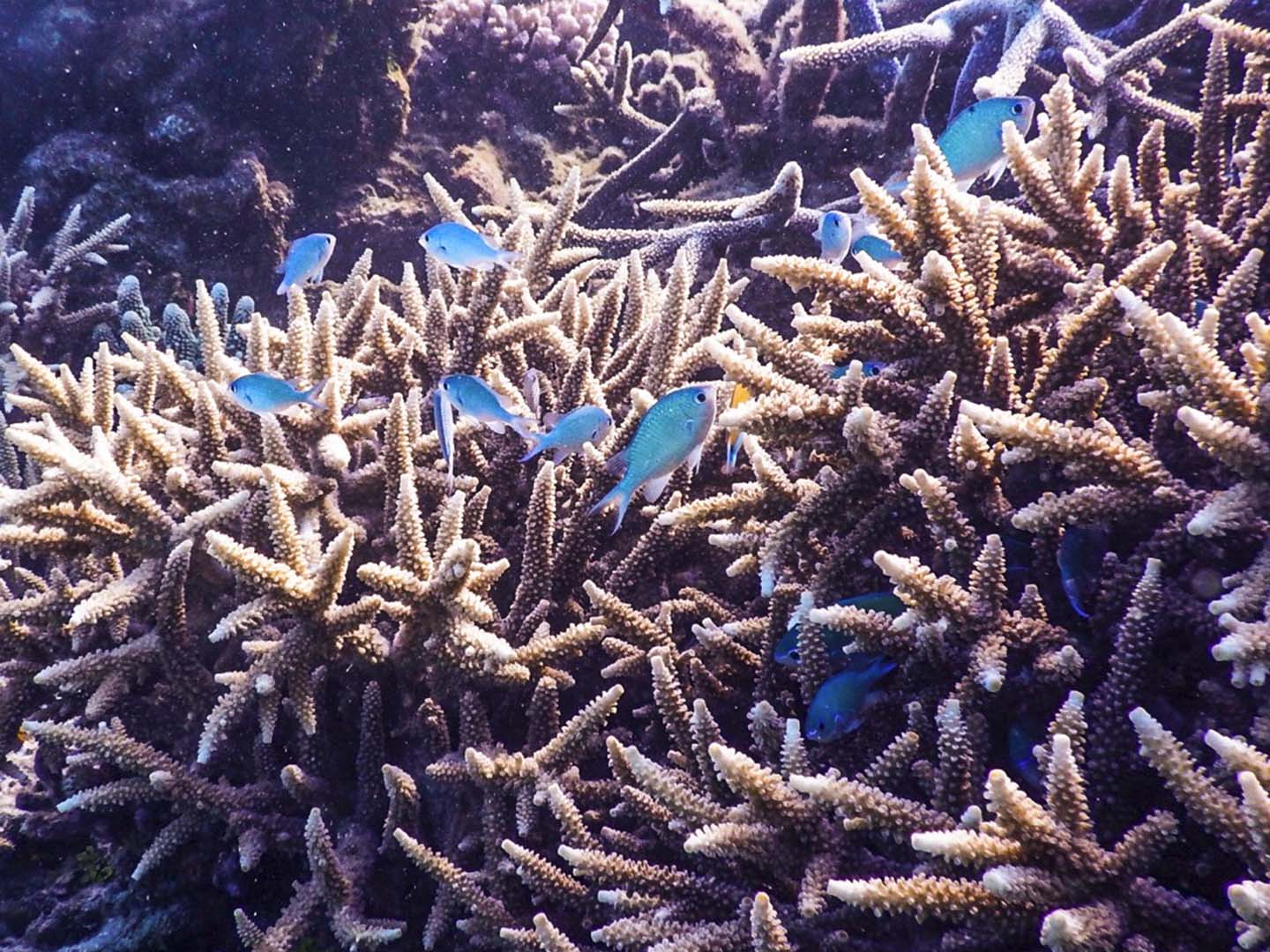
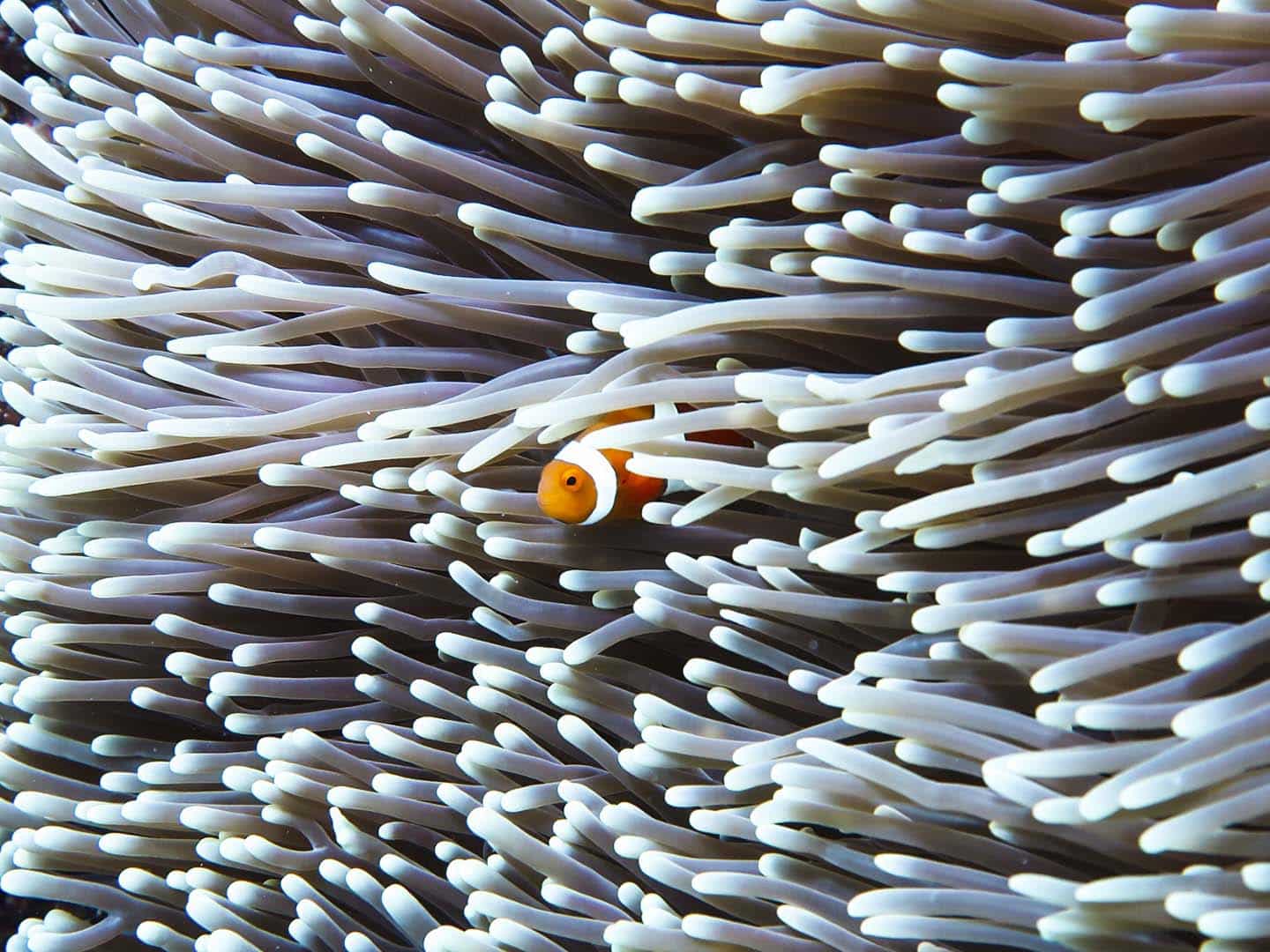
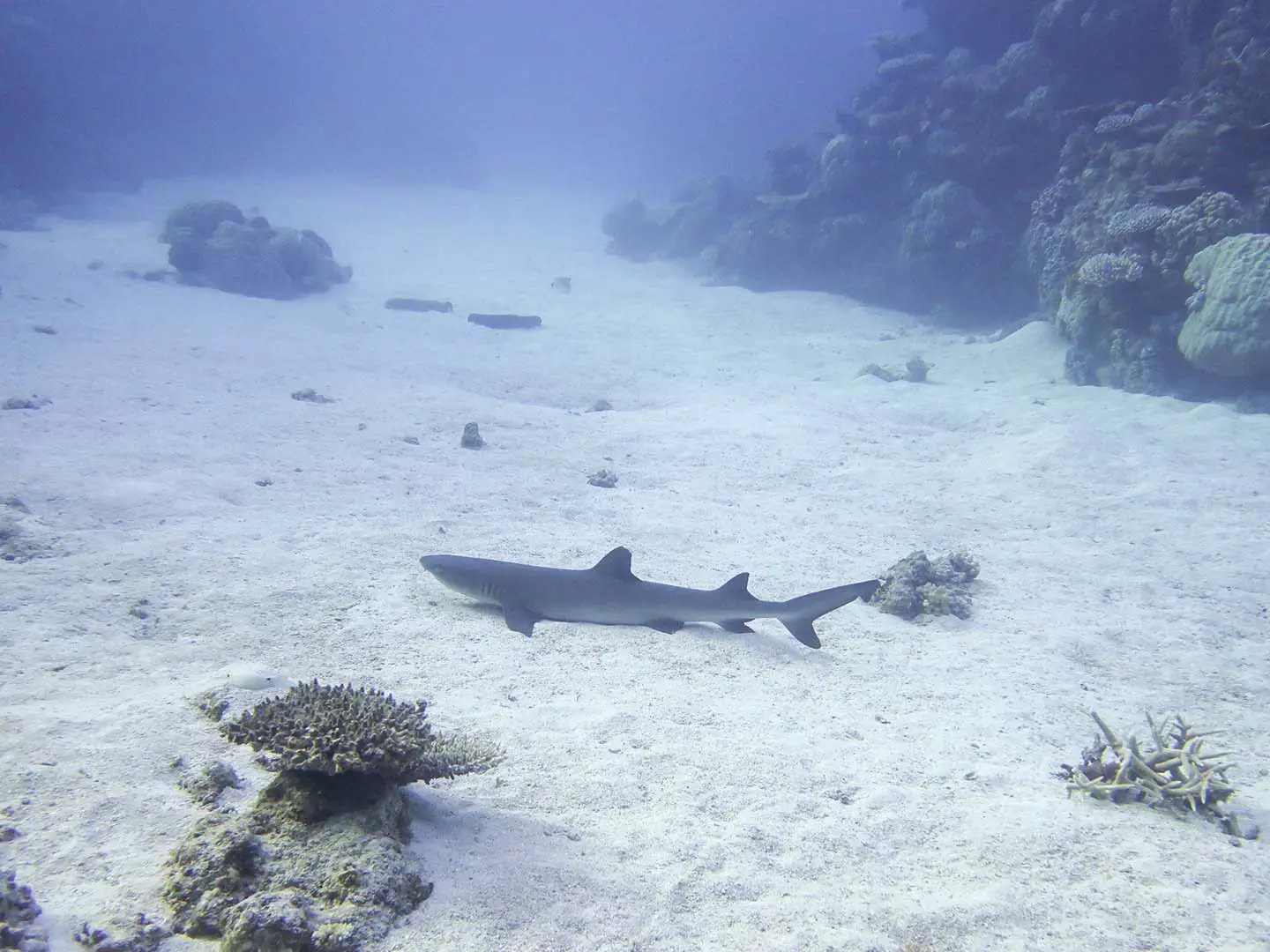
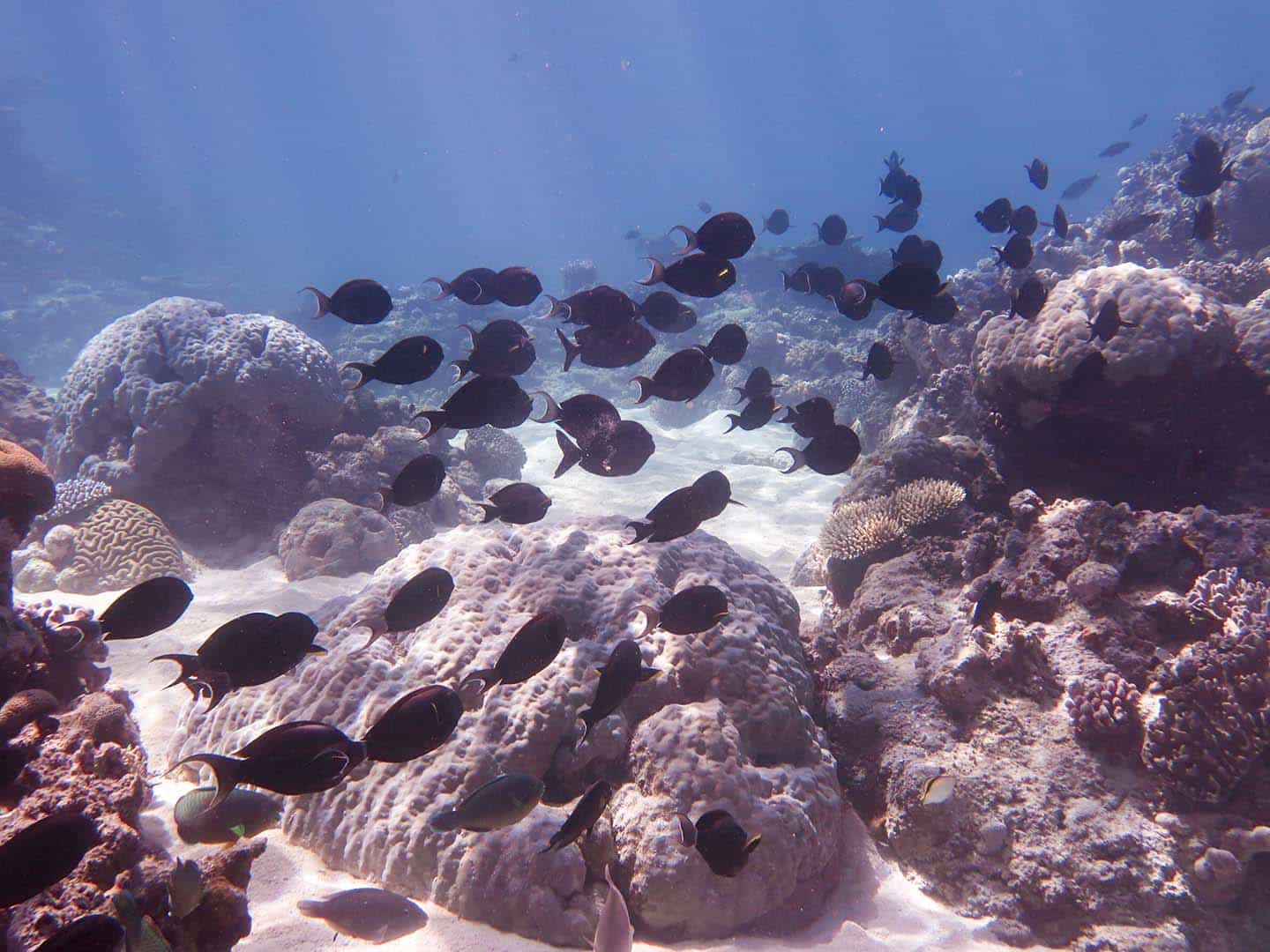
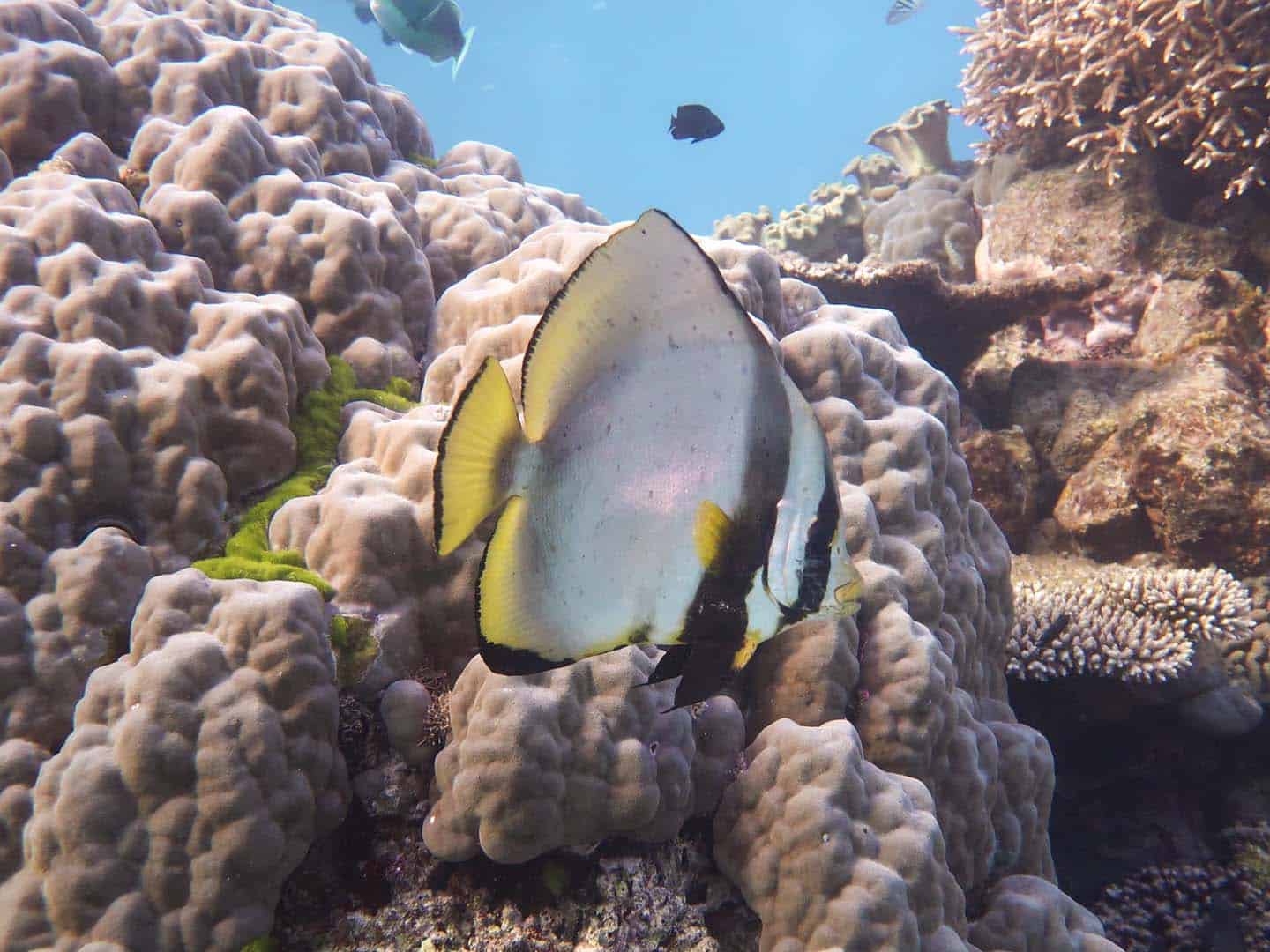
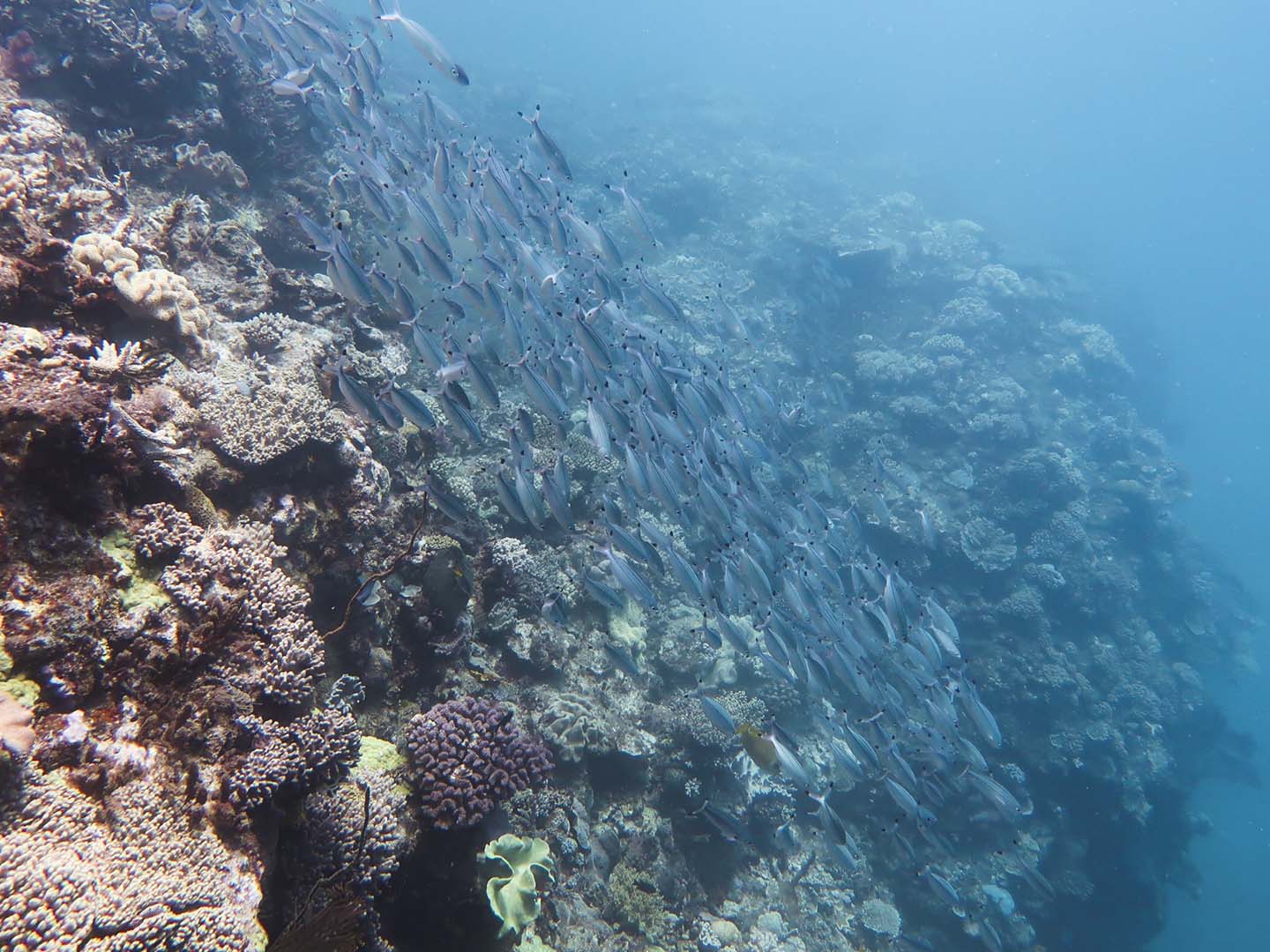
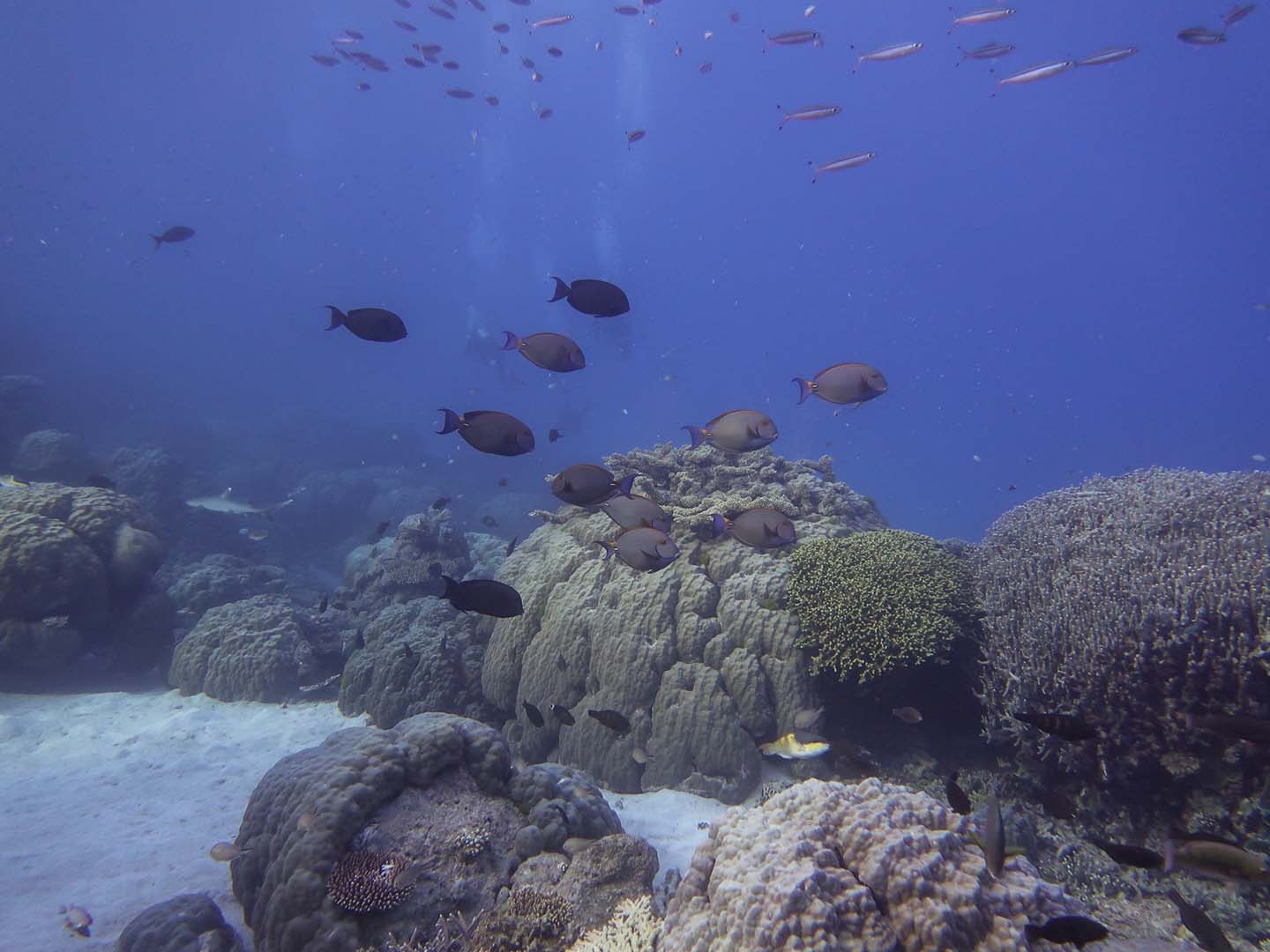
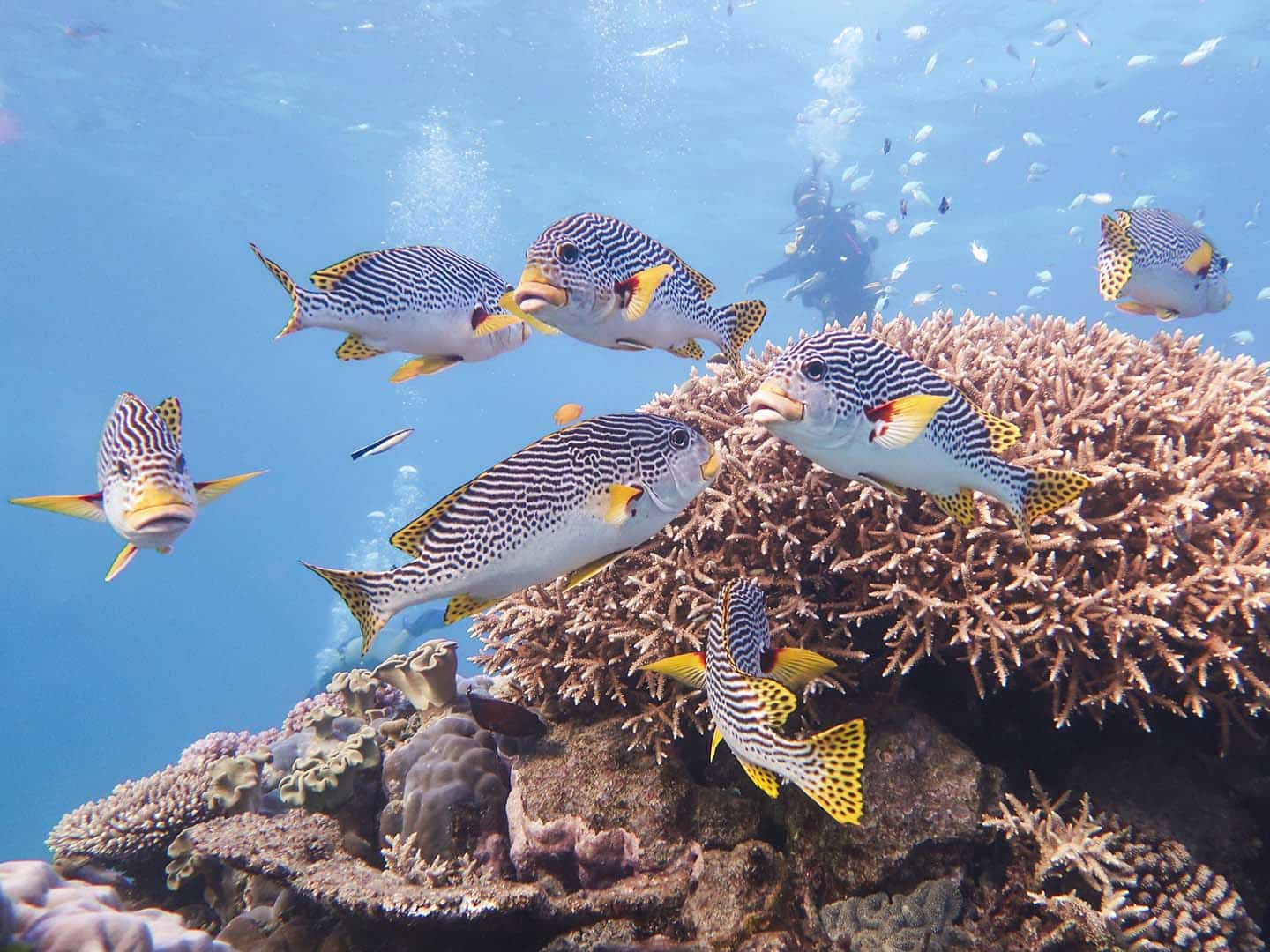
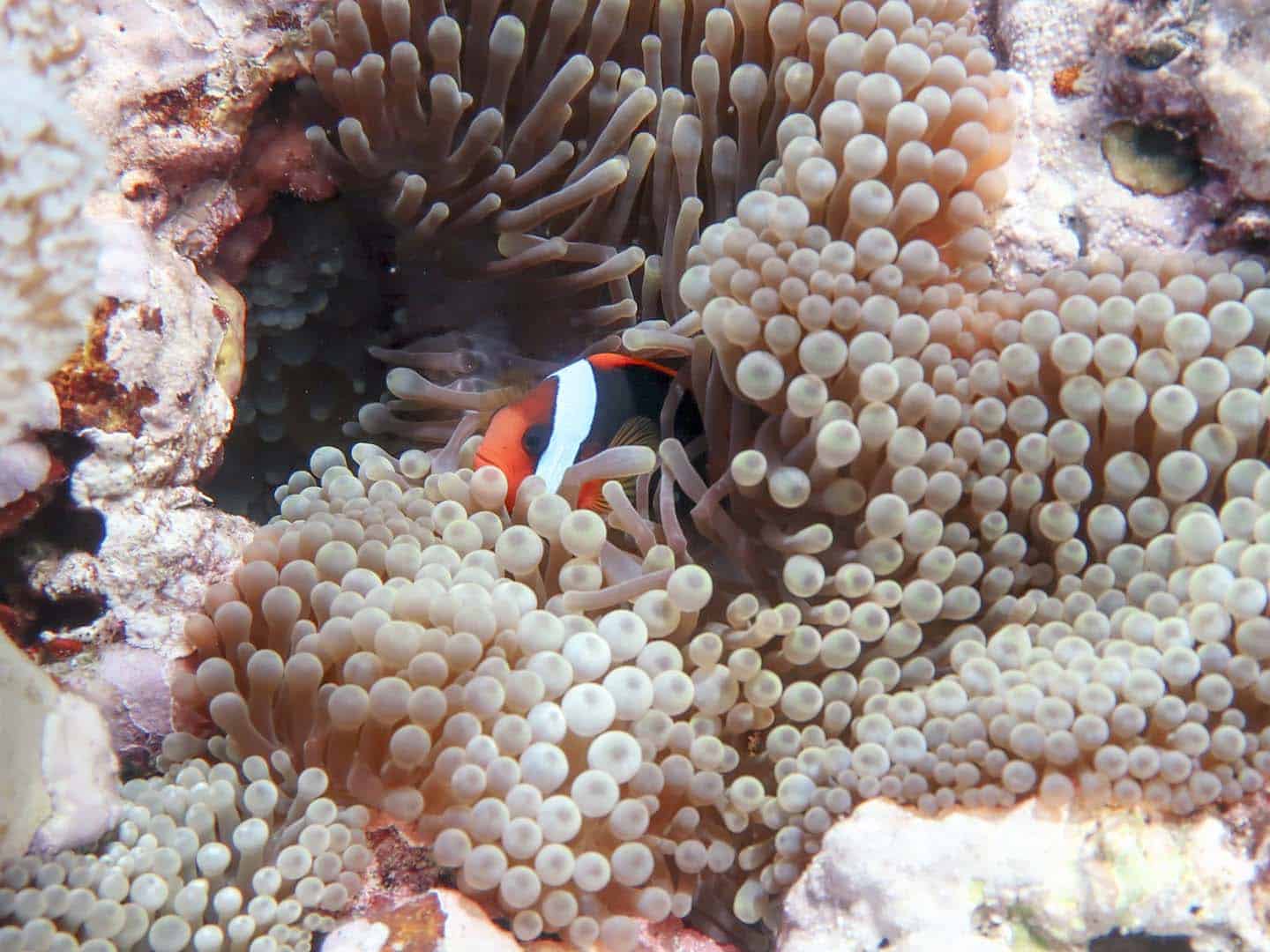
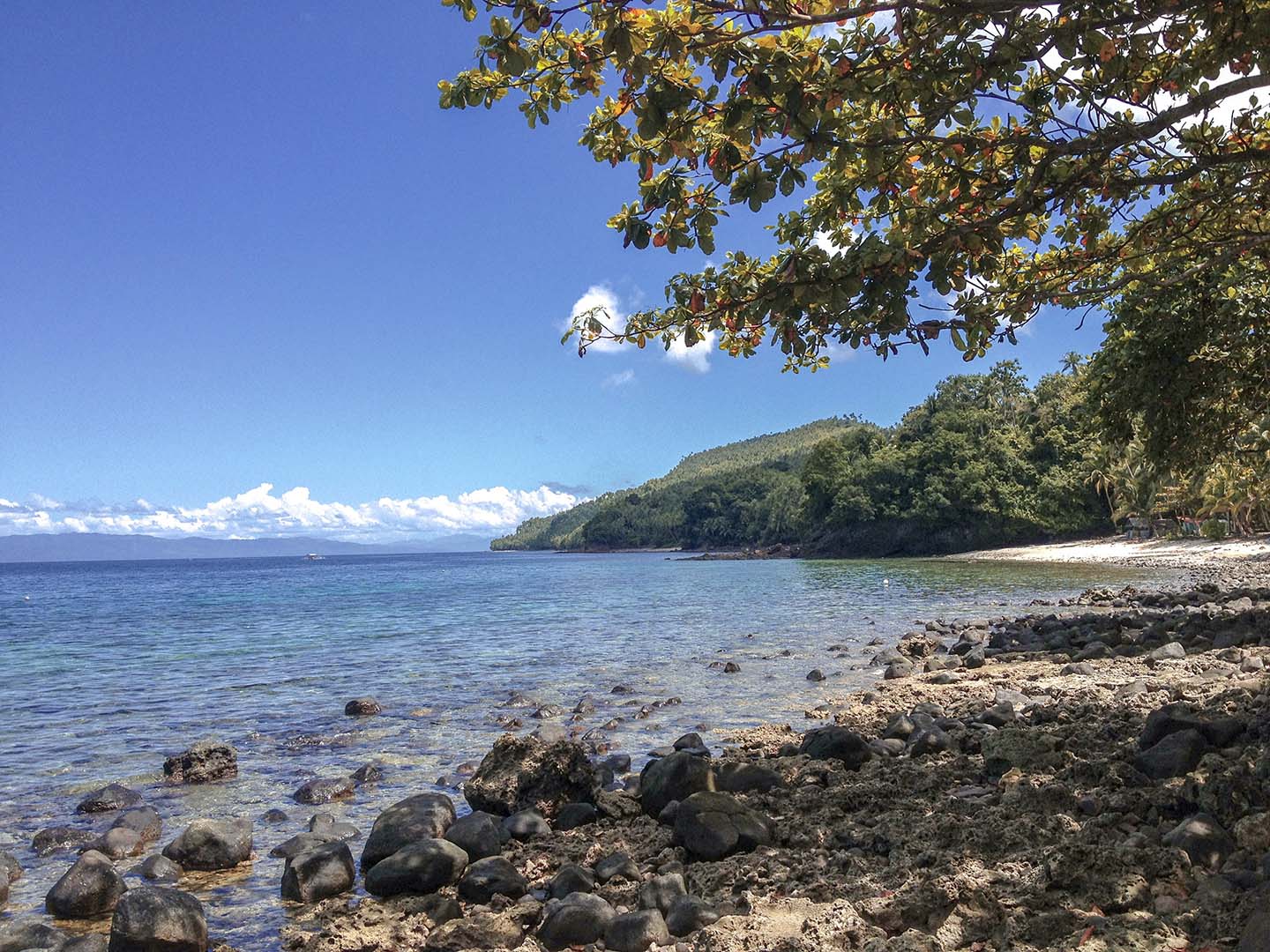
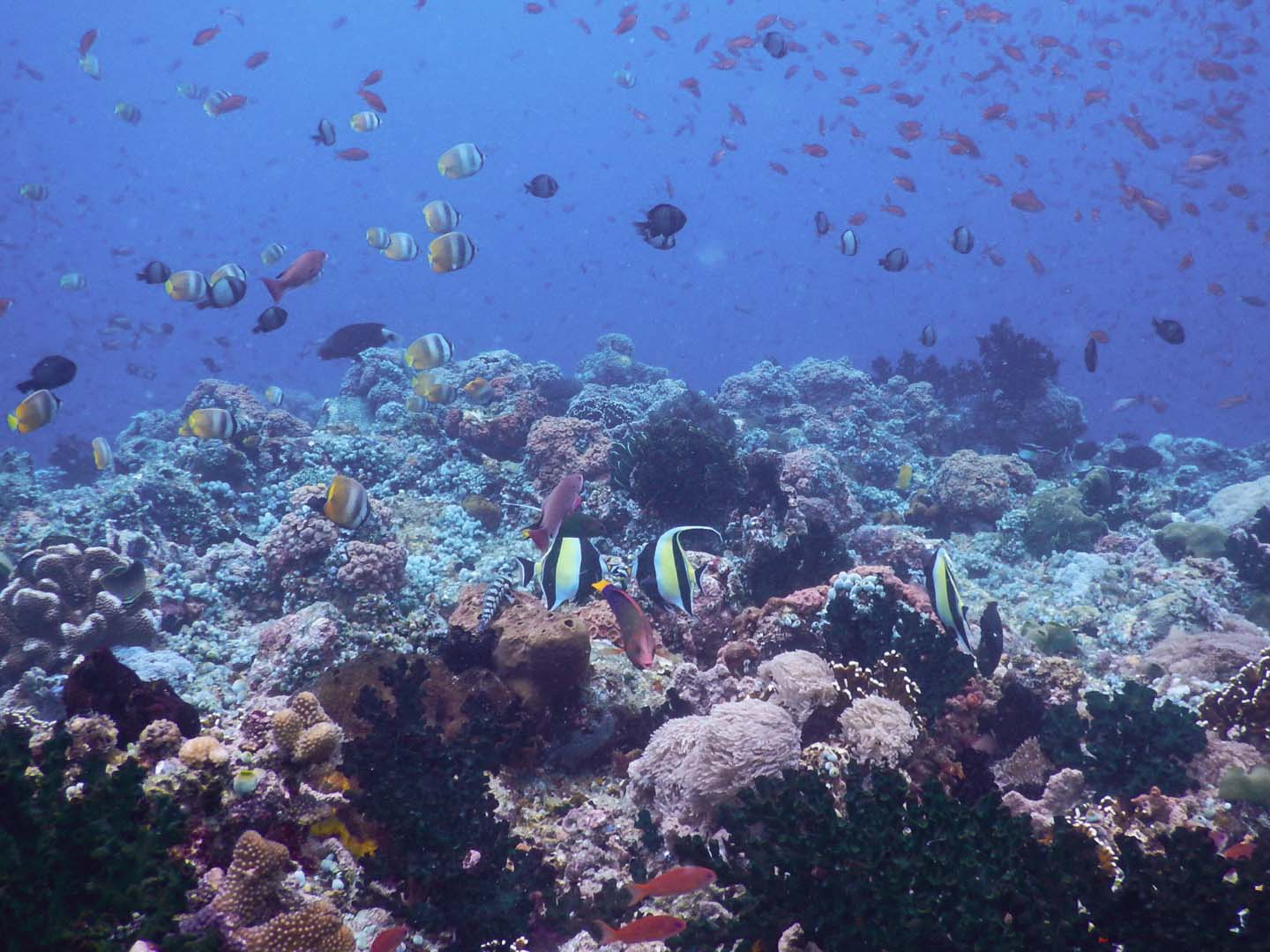
Did they give you a reason why you were denied a Visa in the US? How did you find the reef in Australia?
No, they didn’t say why I was denied! Loved Australia, beautiful reef formations and abundant life. Visibility was amazing!
Well that stinks. I don’t understand because I have a lot of Filipino friends that are in the u.s.????♀️ the Great Barrier Reef is definitely on my bucket list and happy to hear it was amazing
I even have family in the US! I suspect it was because I’m single and they think I’ll go there to find myself a husband hahaha
Make sure to go to the outer reef if you plan to do GBR. The liveaboard is definitely worth doing!
Thanks. I hope you don’t give up maybe it’s just a weird fluke
It’s quite common for Filipinos to get denied tourist visa to the US and they never say why! I guess I just won’t be scuba diving in the US anytime soon! 😀
Honestly the only place to dive is Key Largo and it’s been beat up by tourist. Diving in the Philippines is far superior so don’t feel too sad
Well there is Hawaii! Heard there are some good places there! Glad you got some diving done when you visited the PH! I am yet to do Coron so will definitely go back to your posts about it! 🙂
I’m actually going back to coron Philippines the end of January for about a month to visit with my friends and do more diving